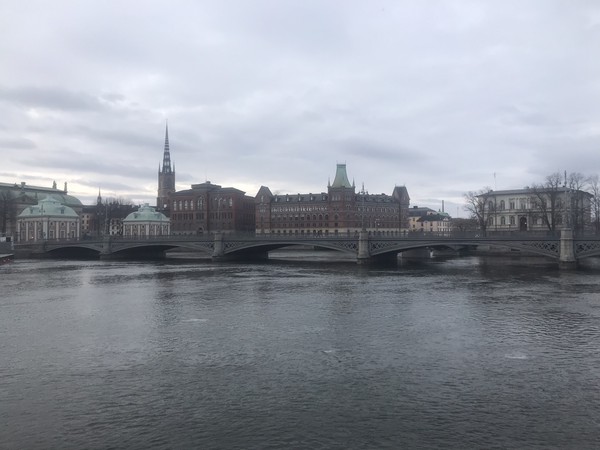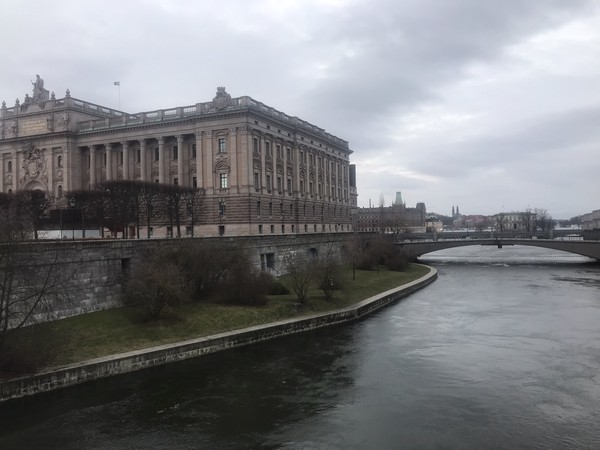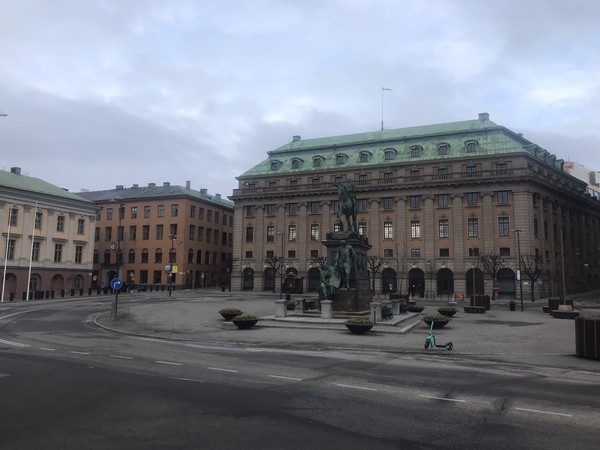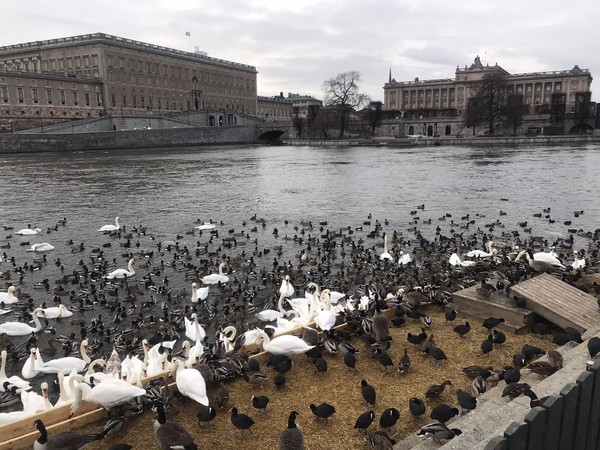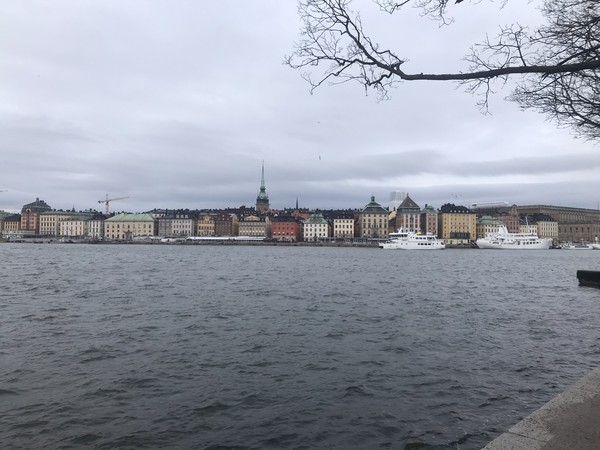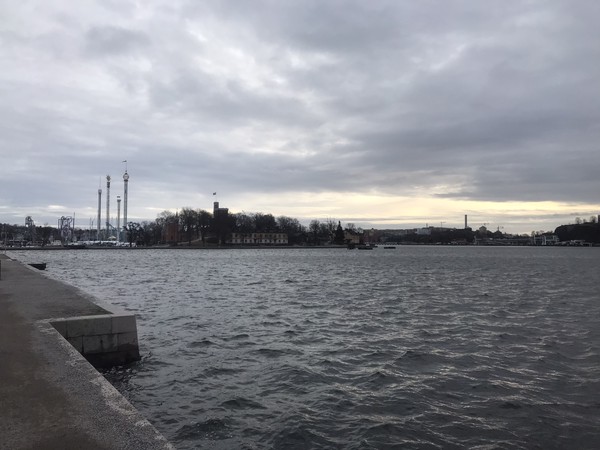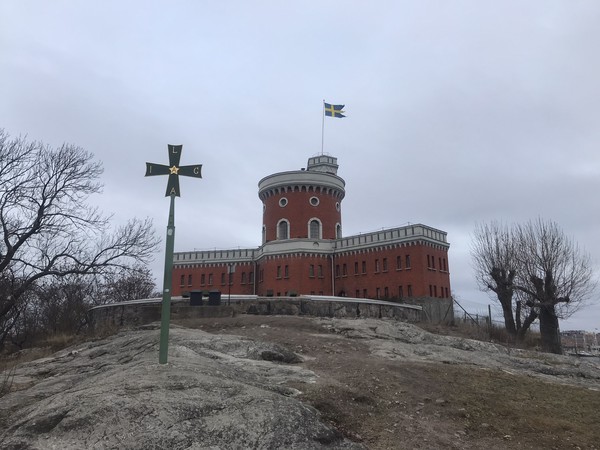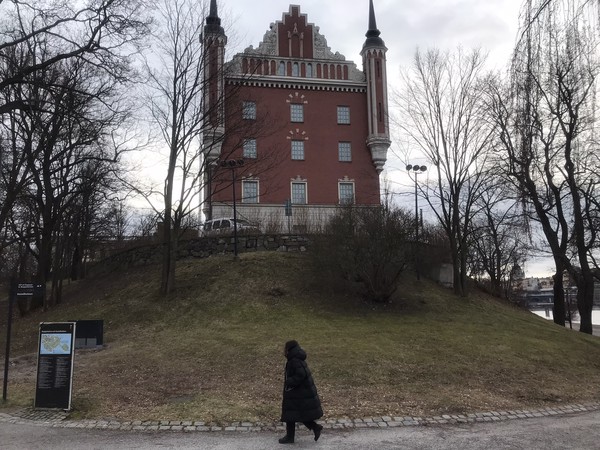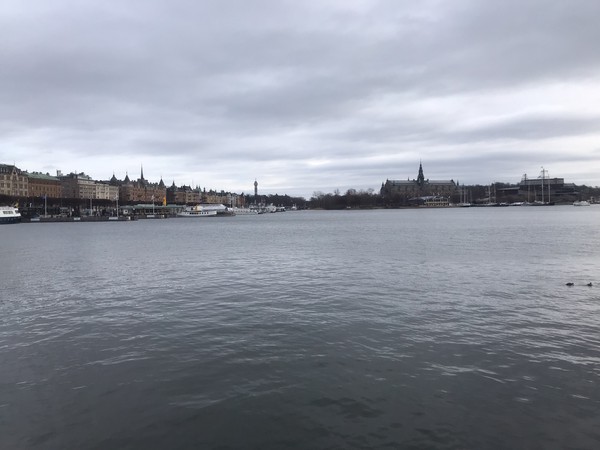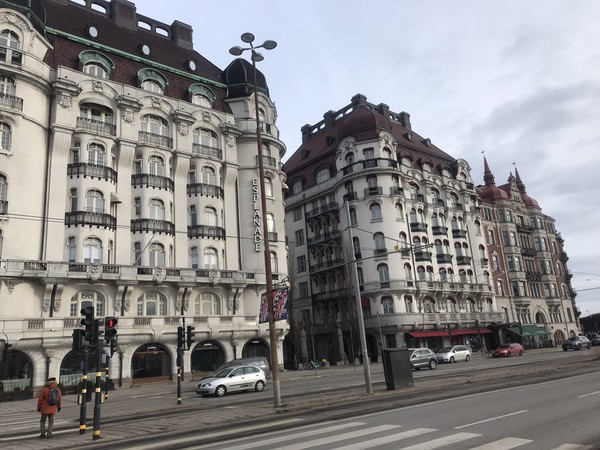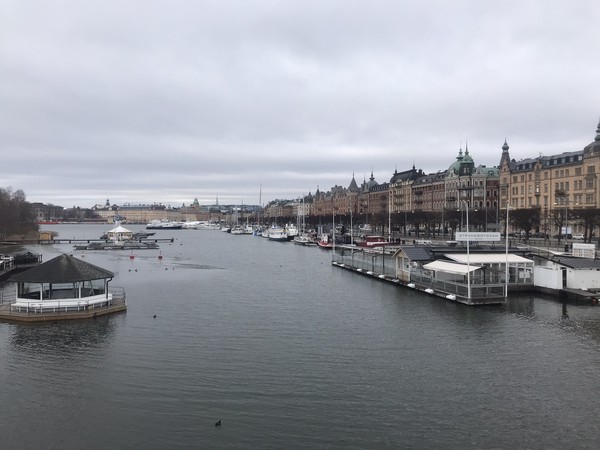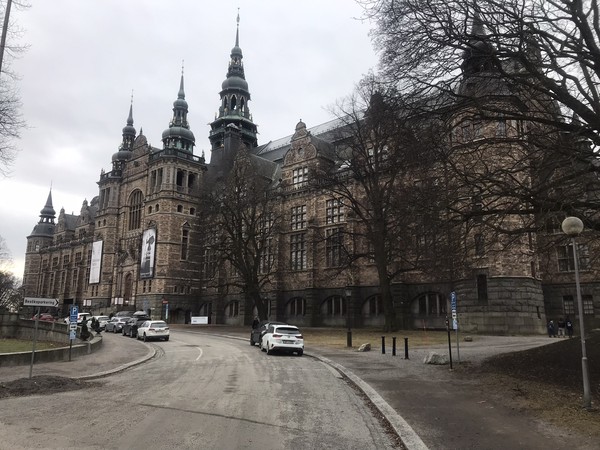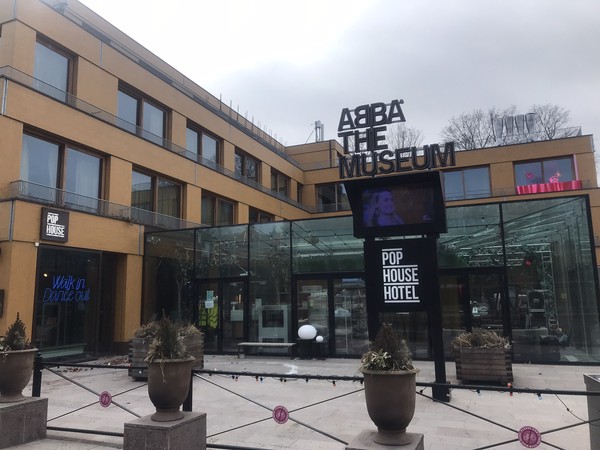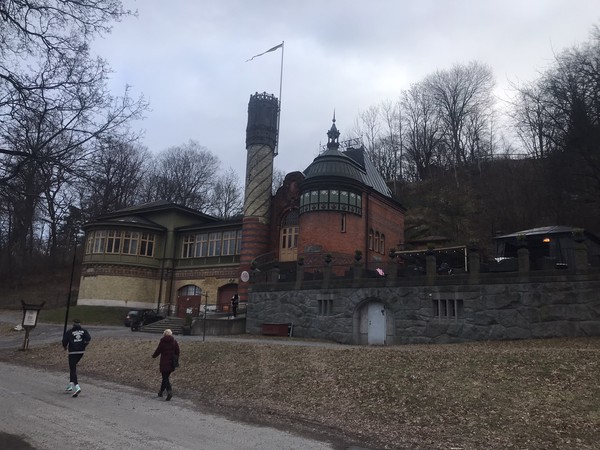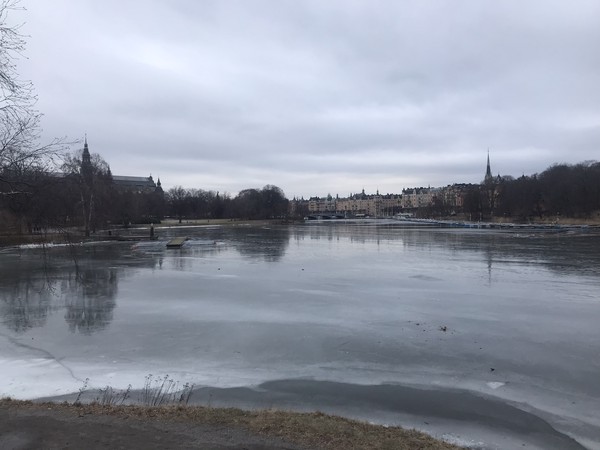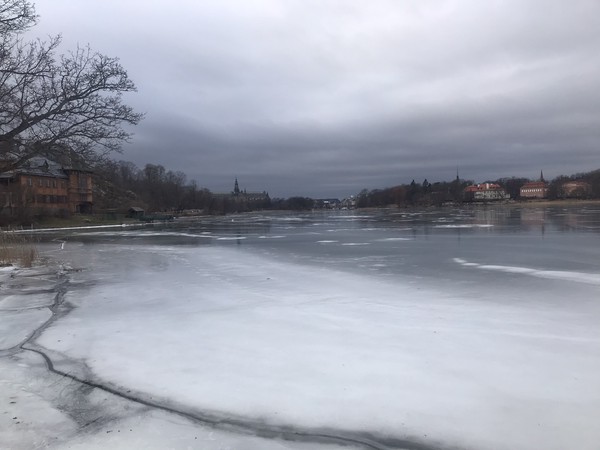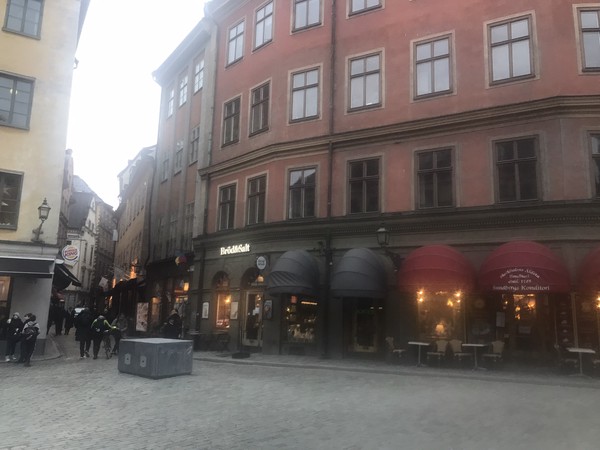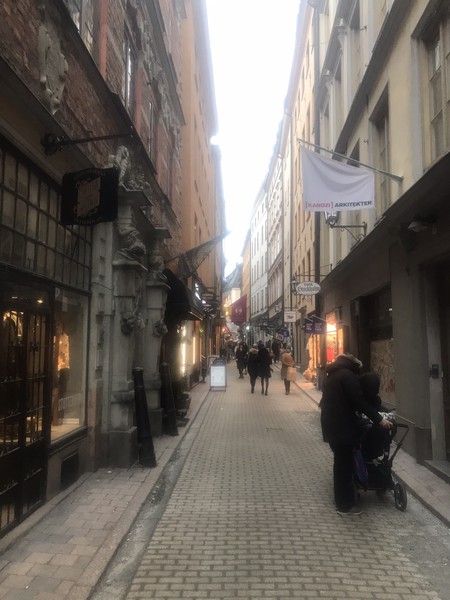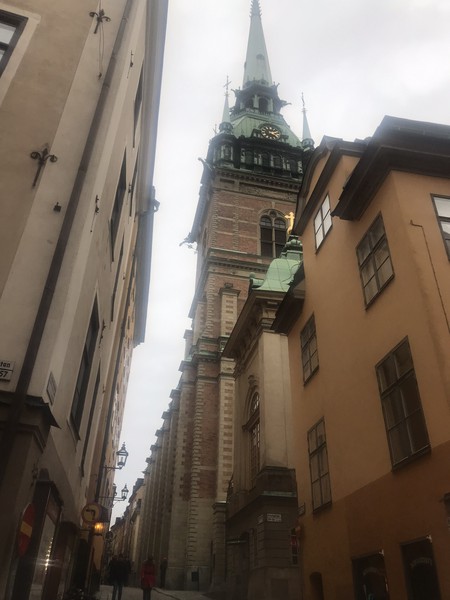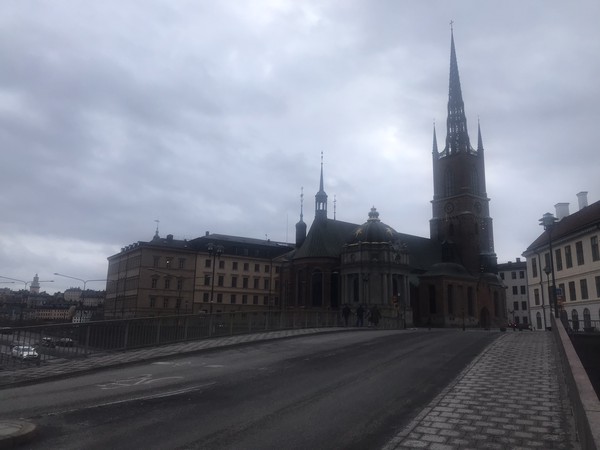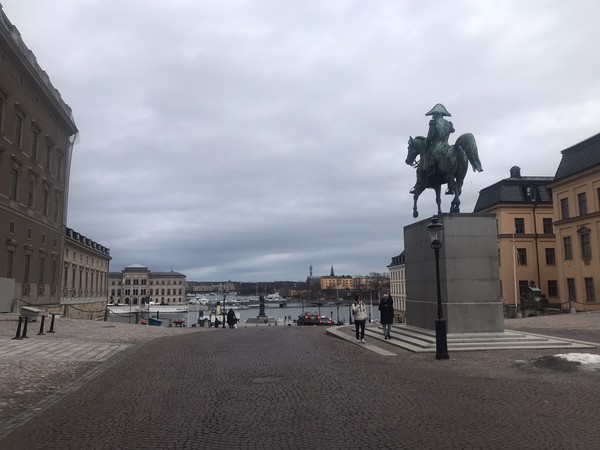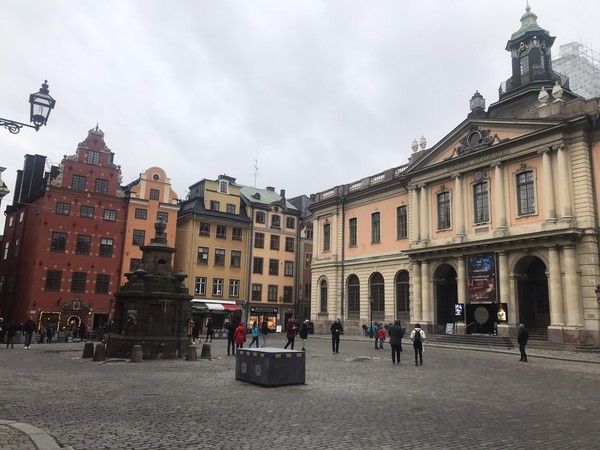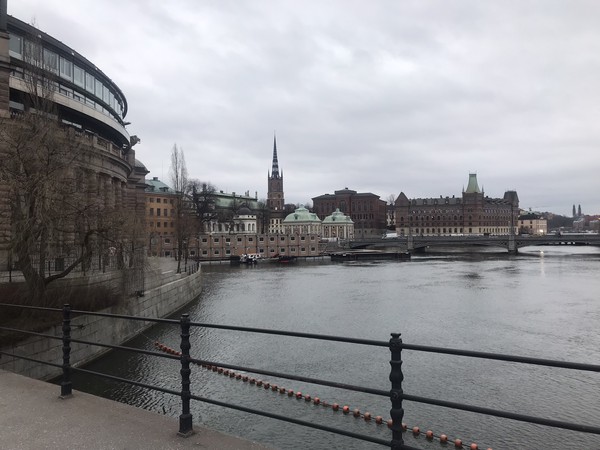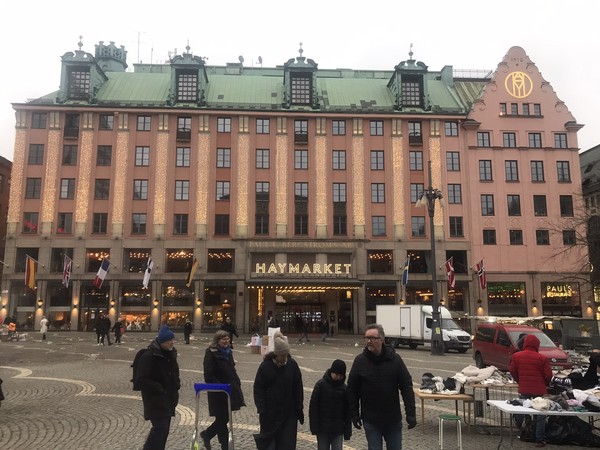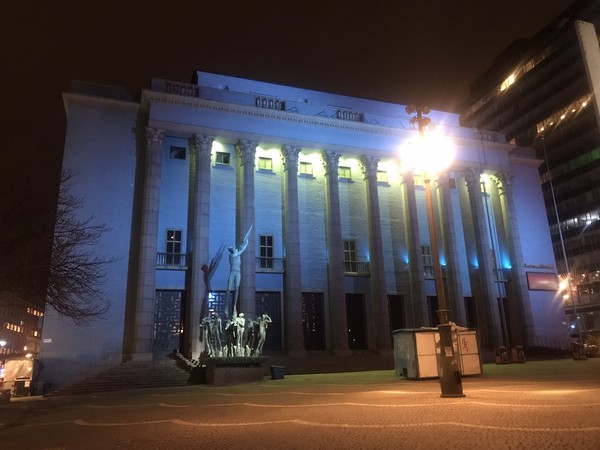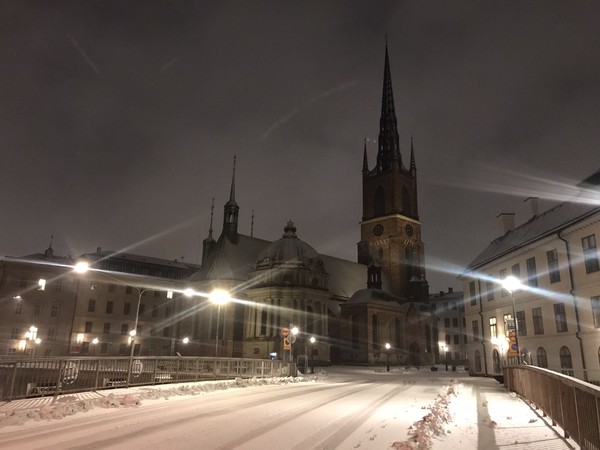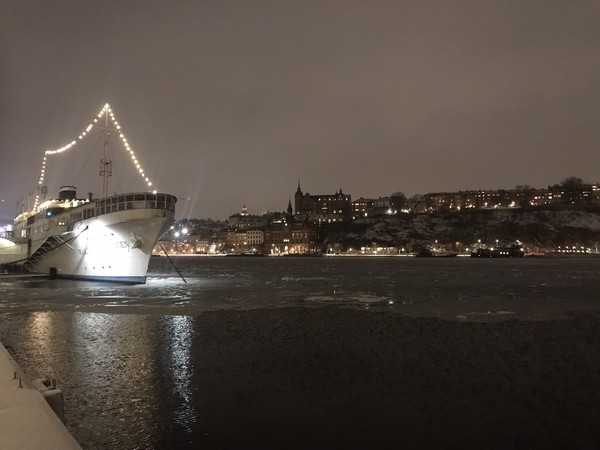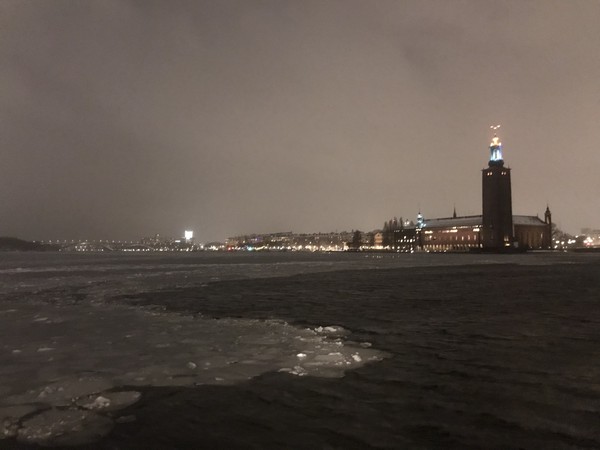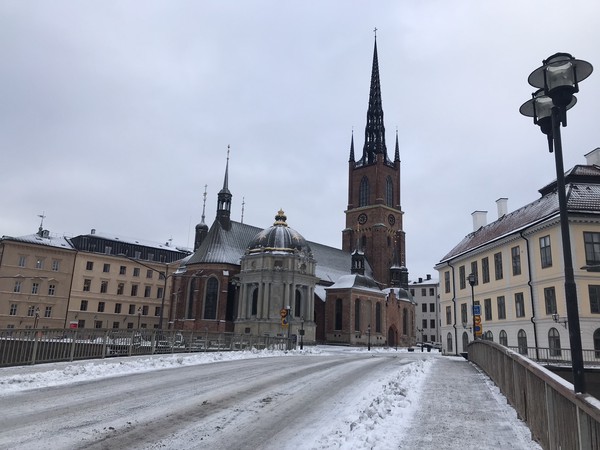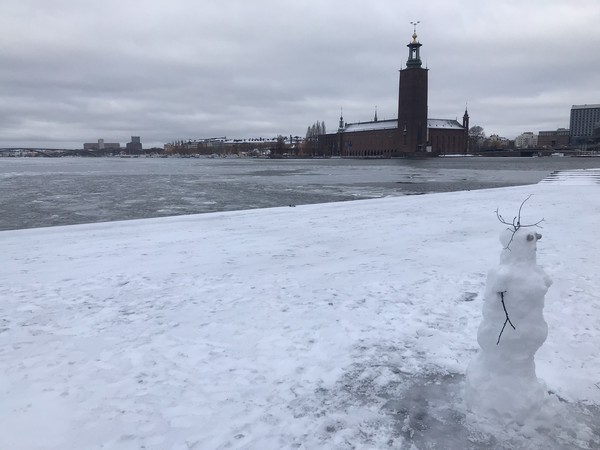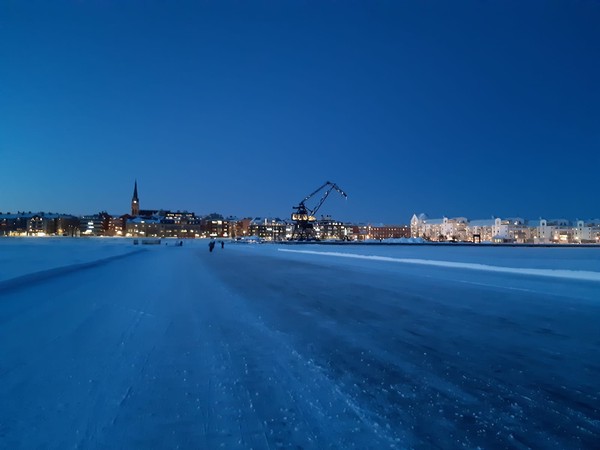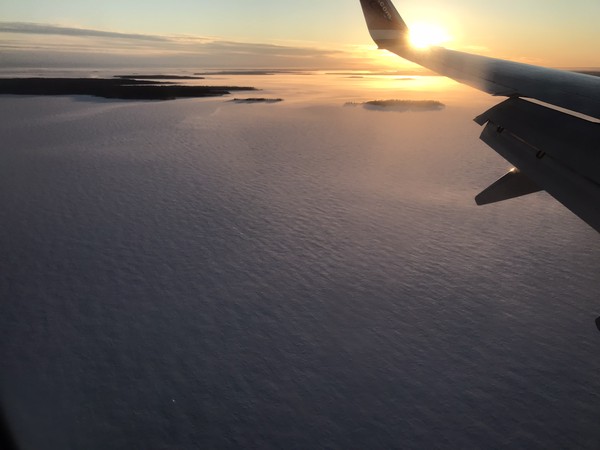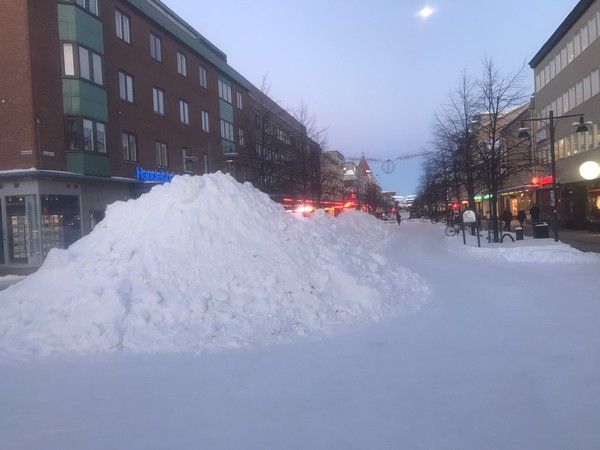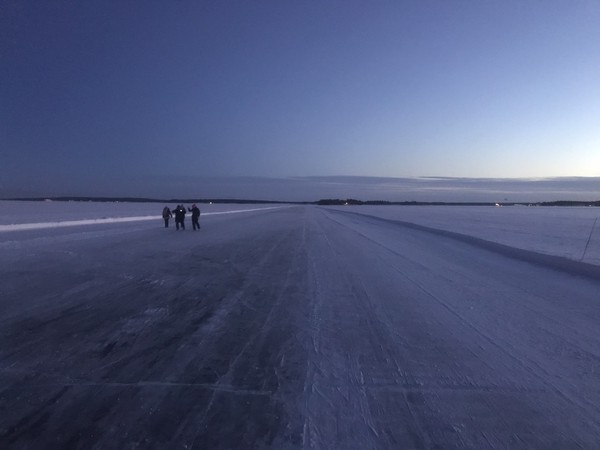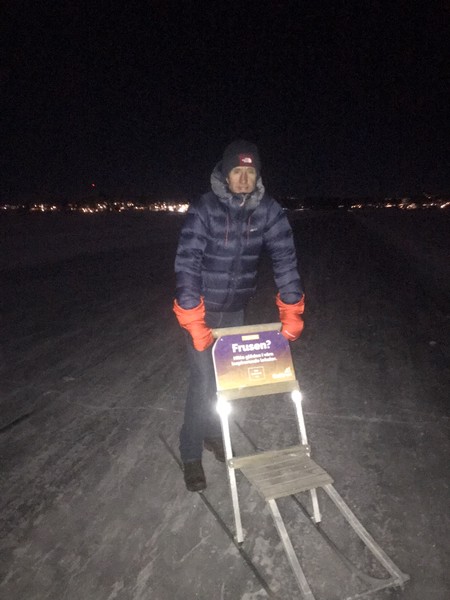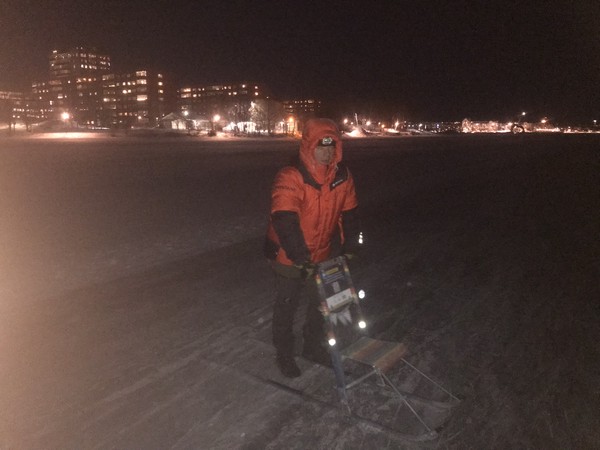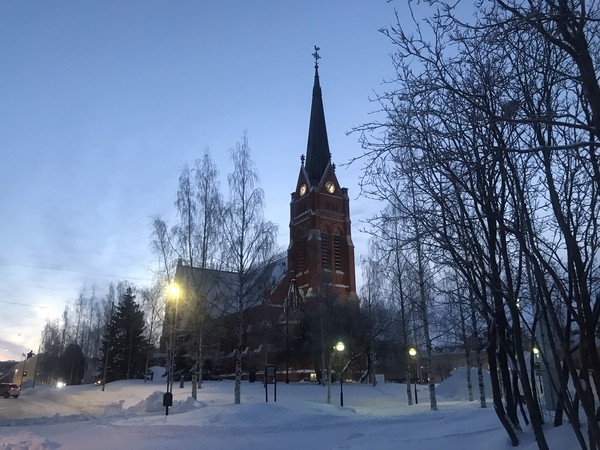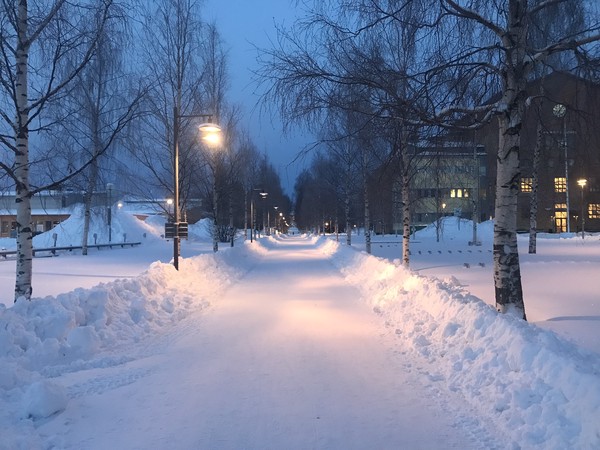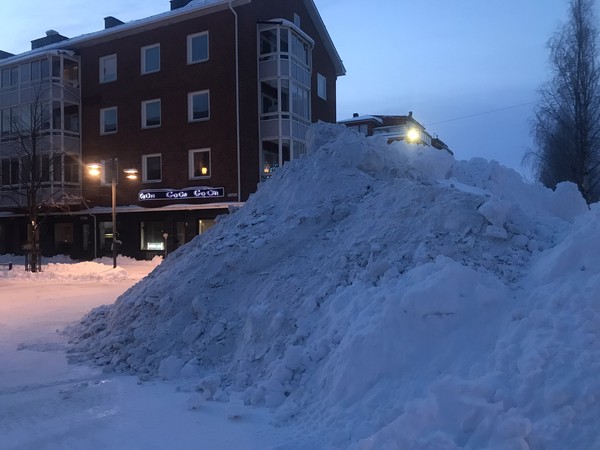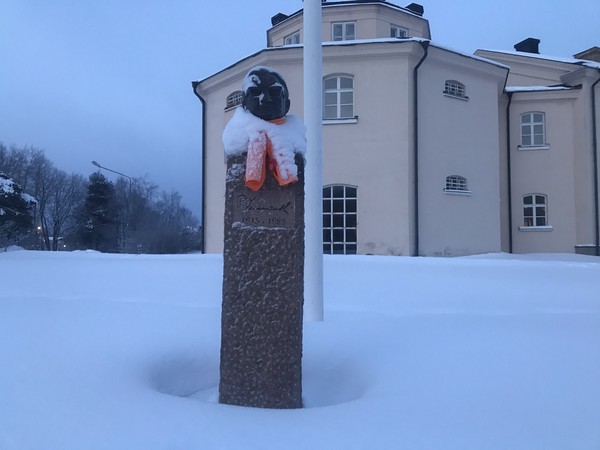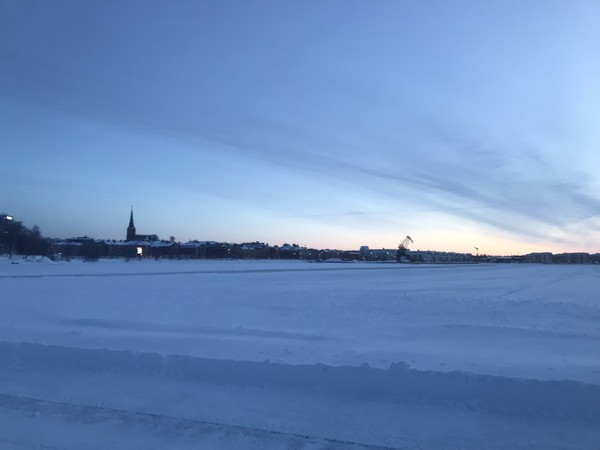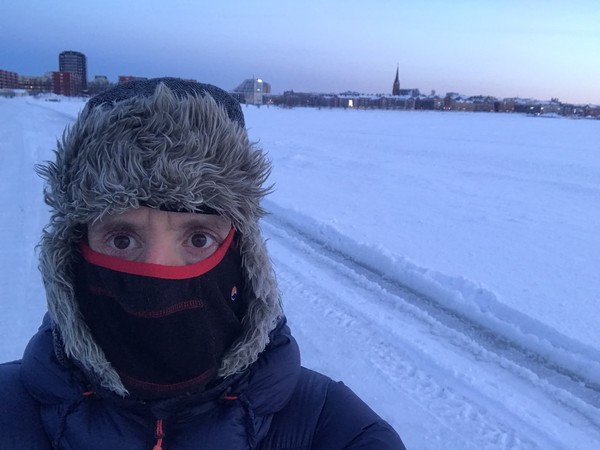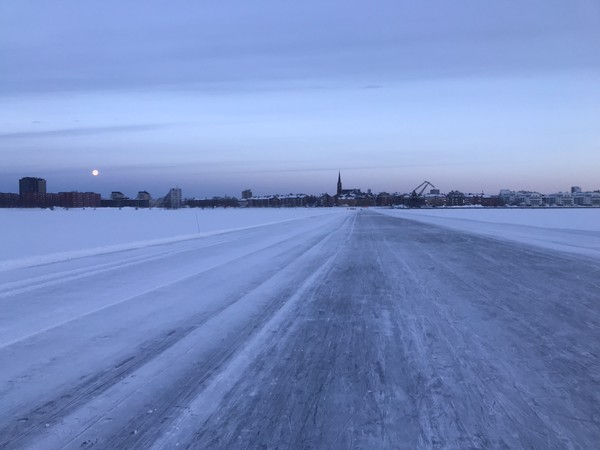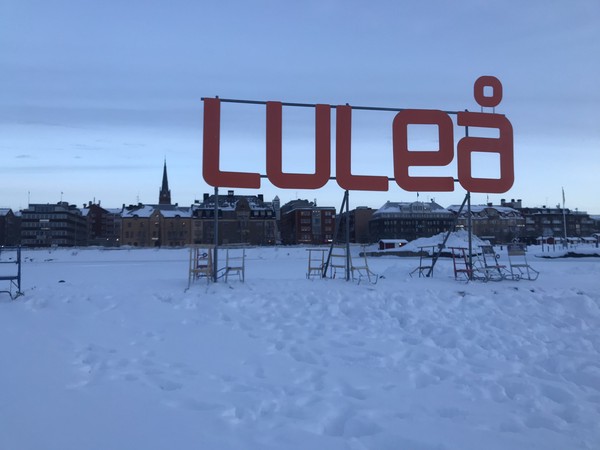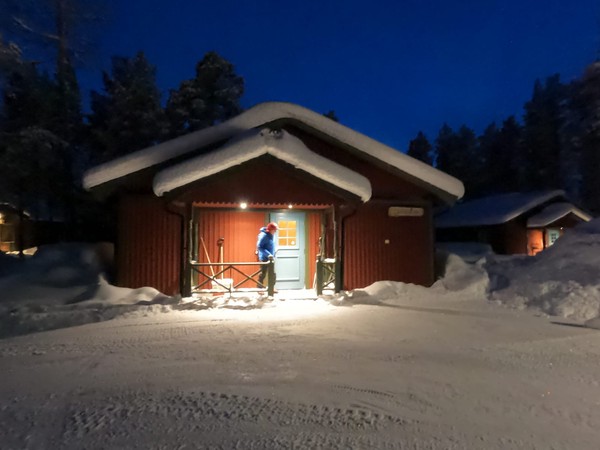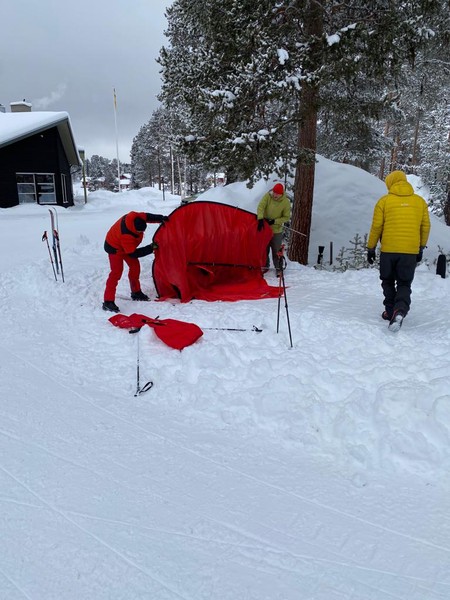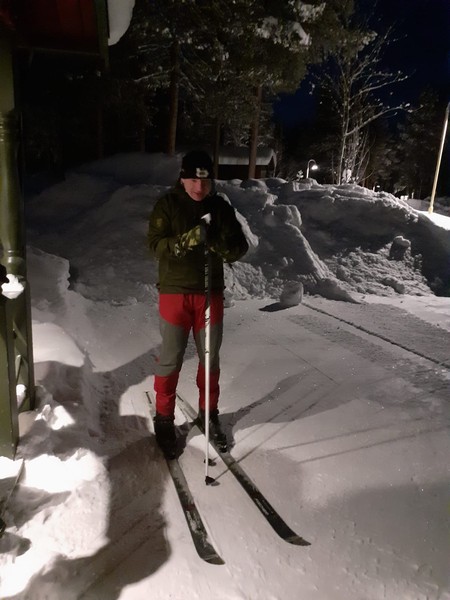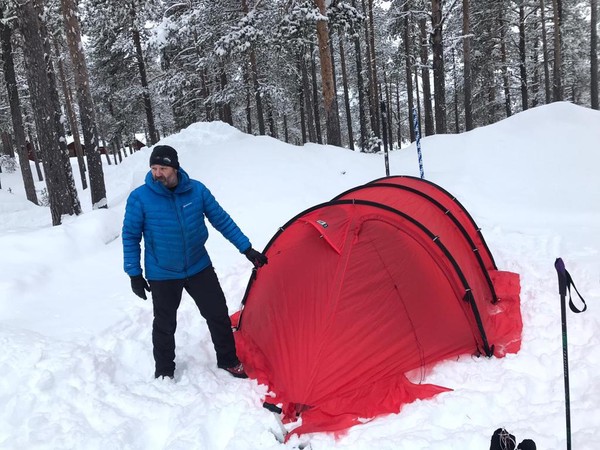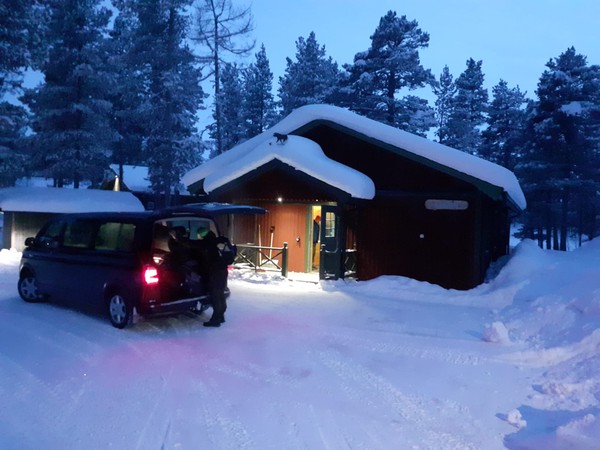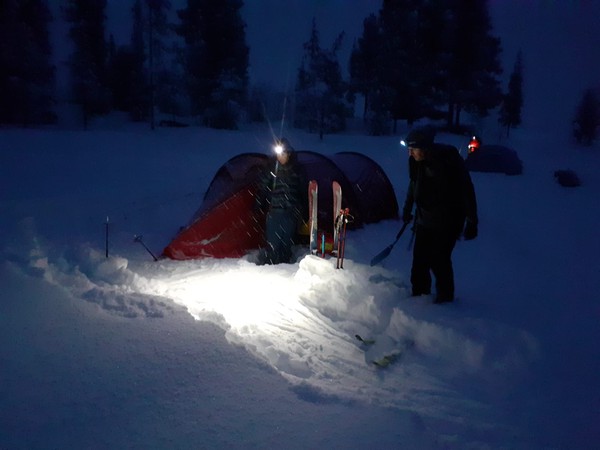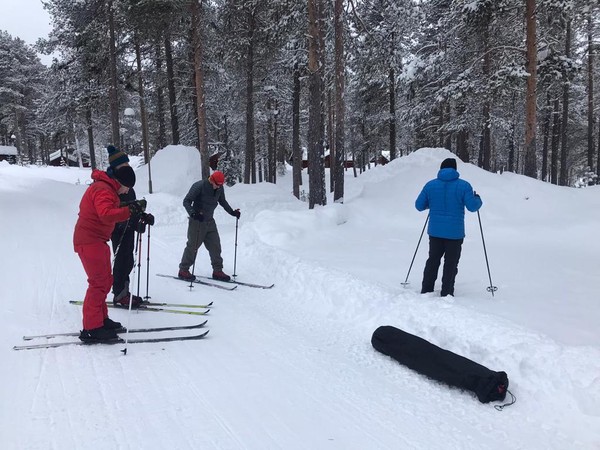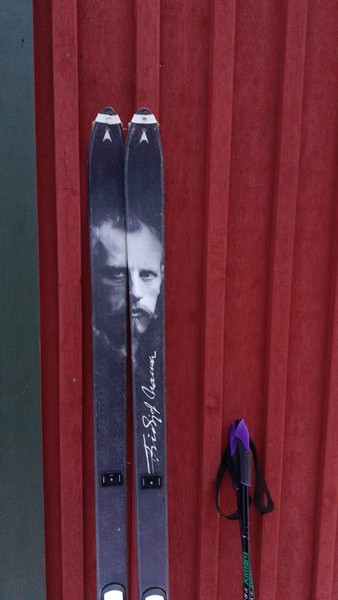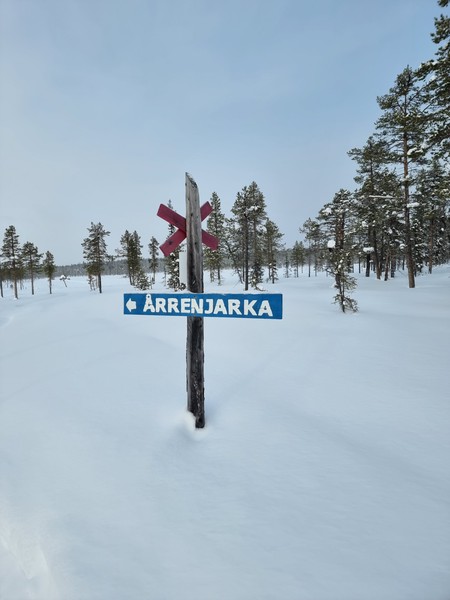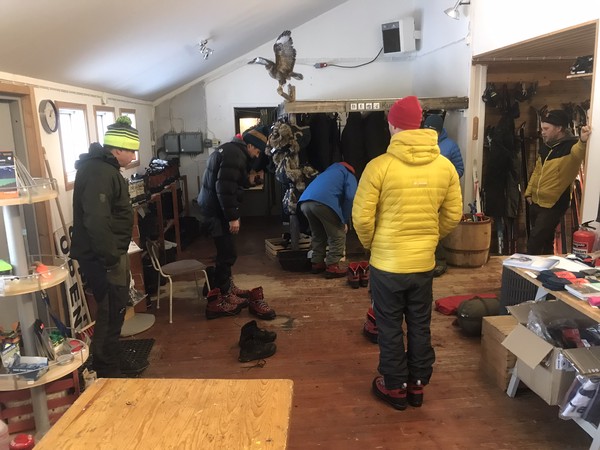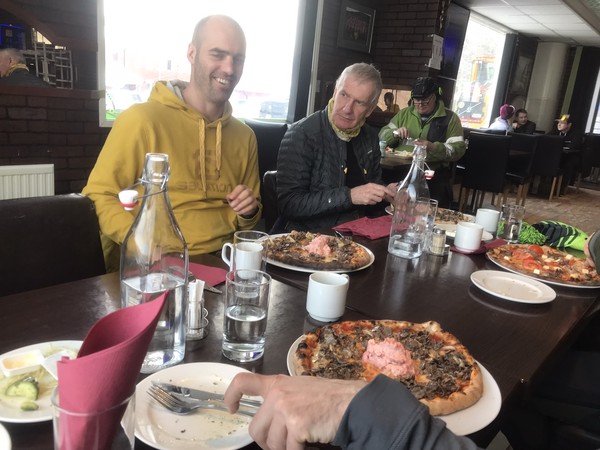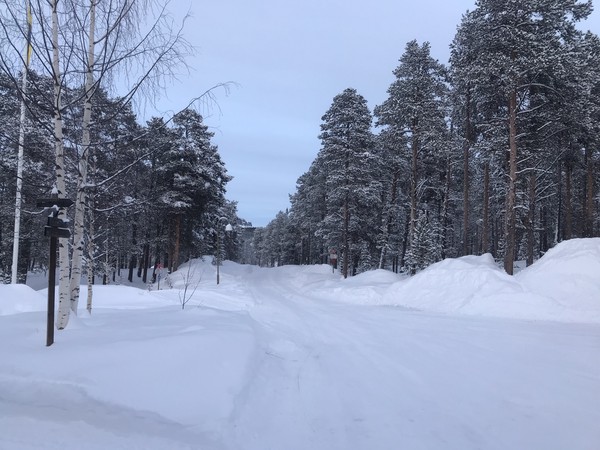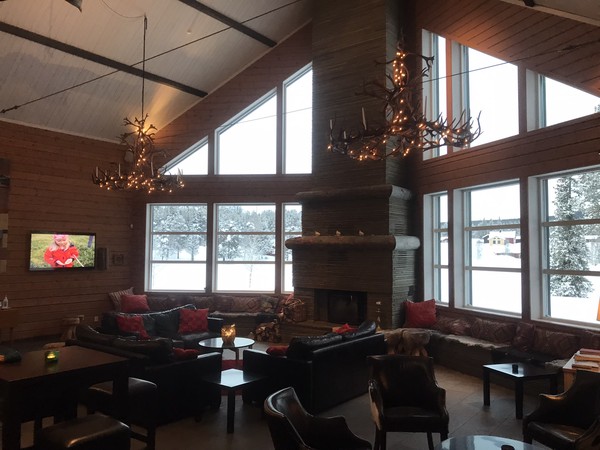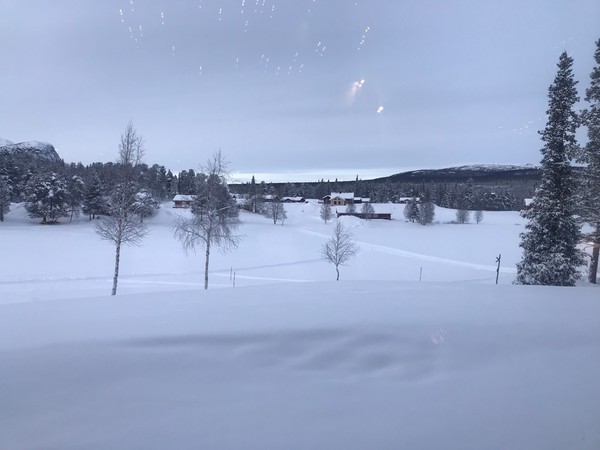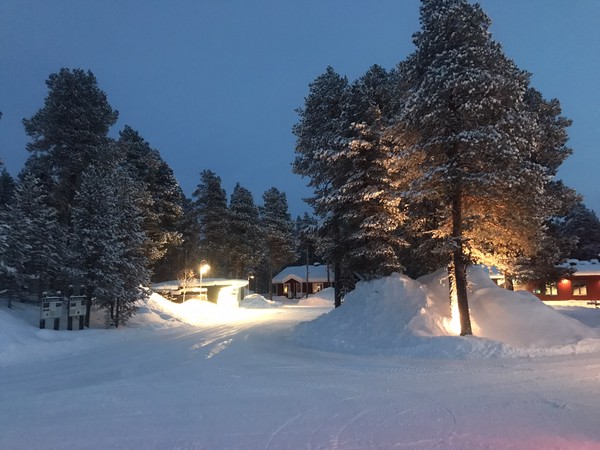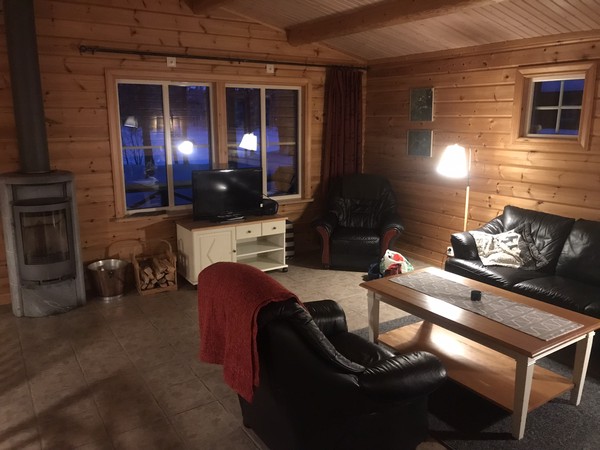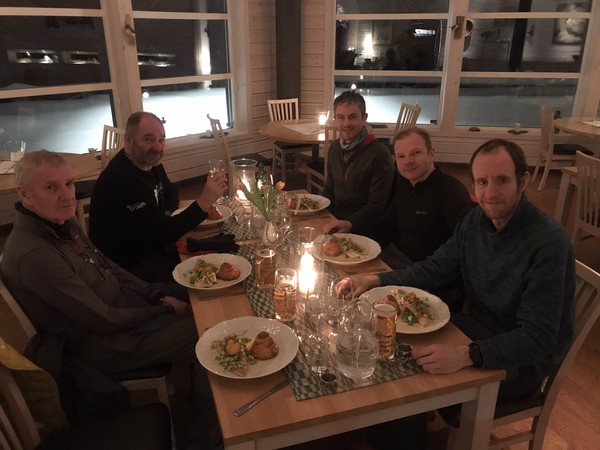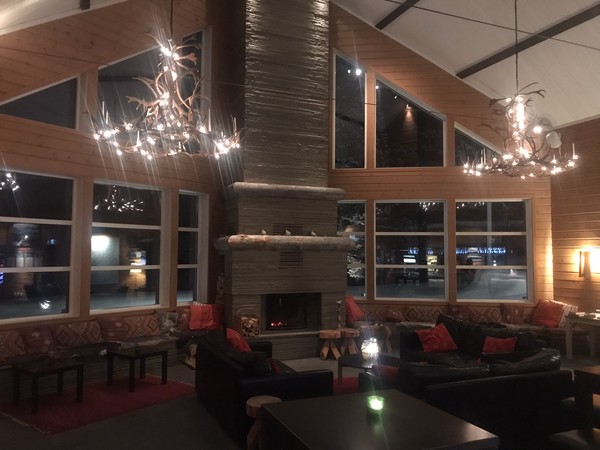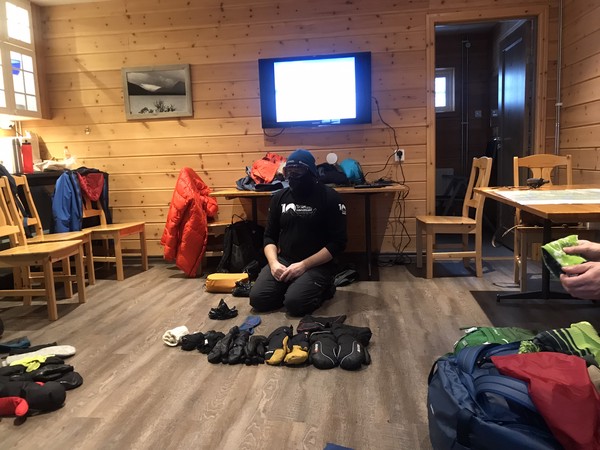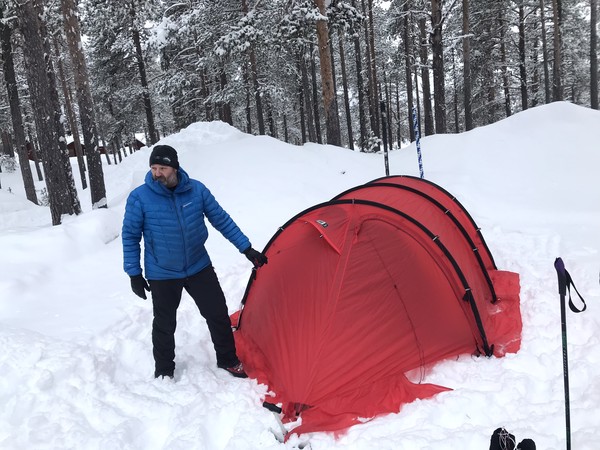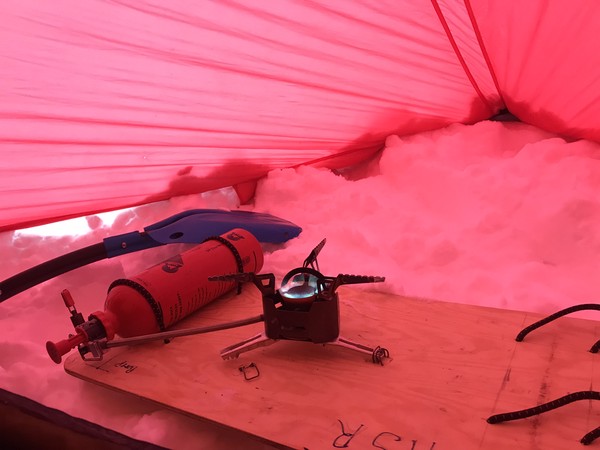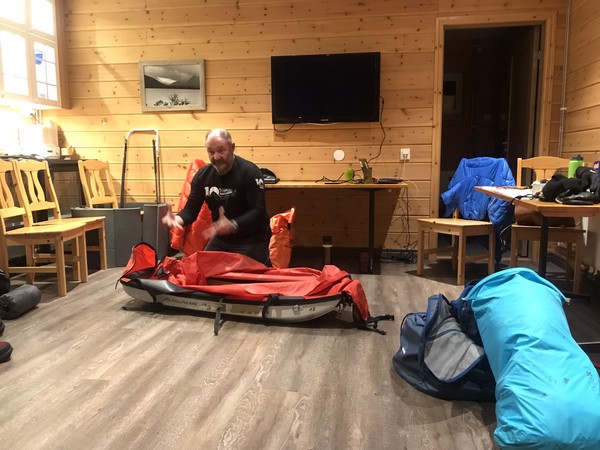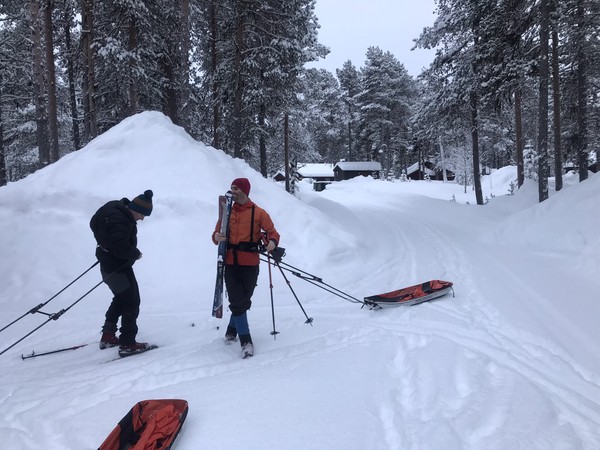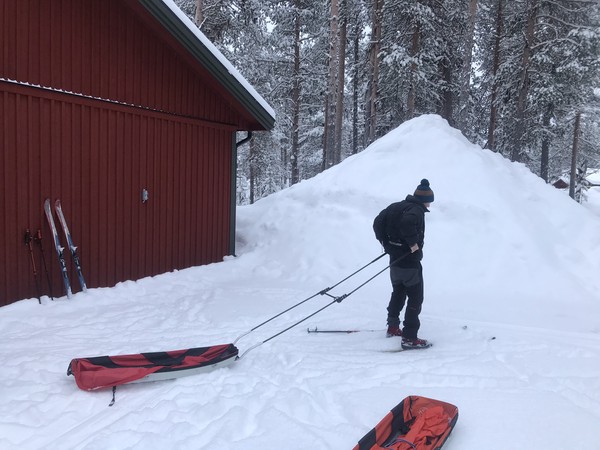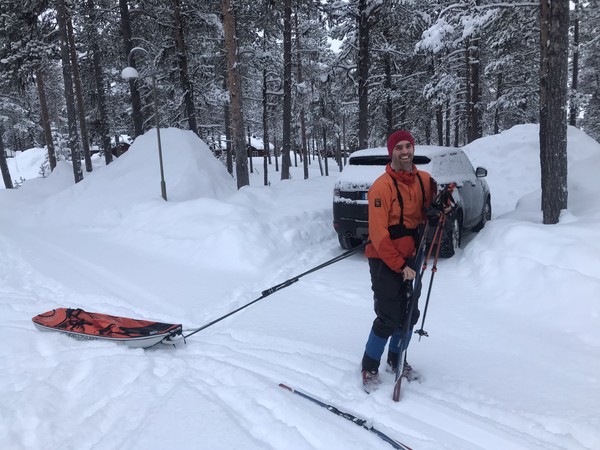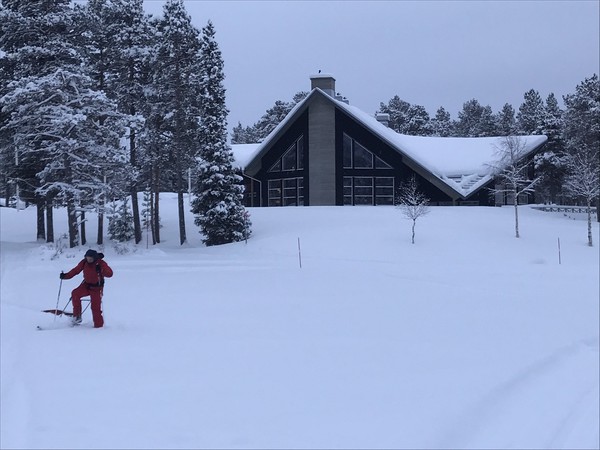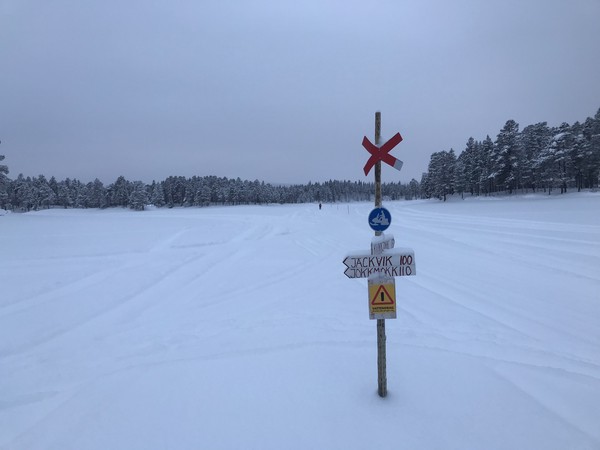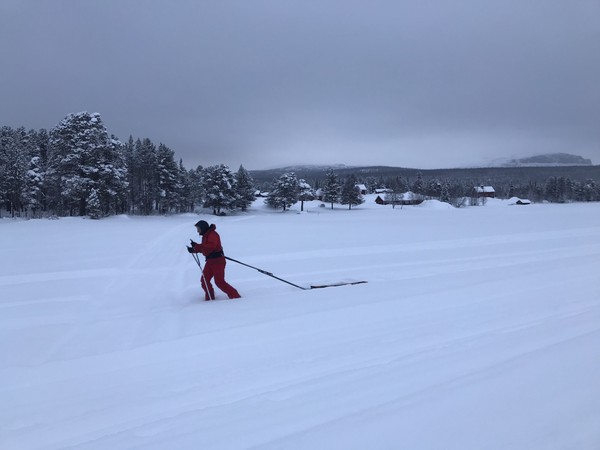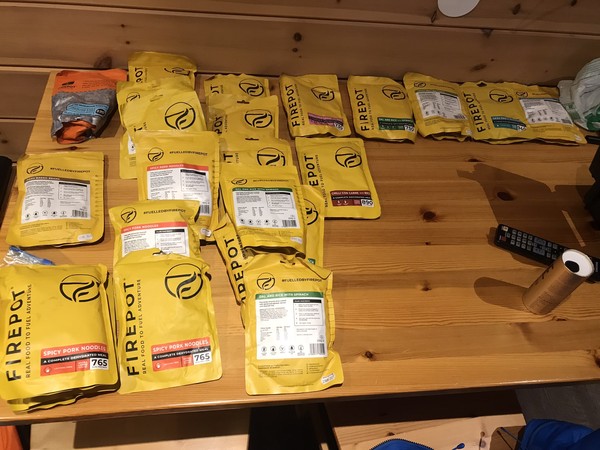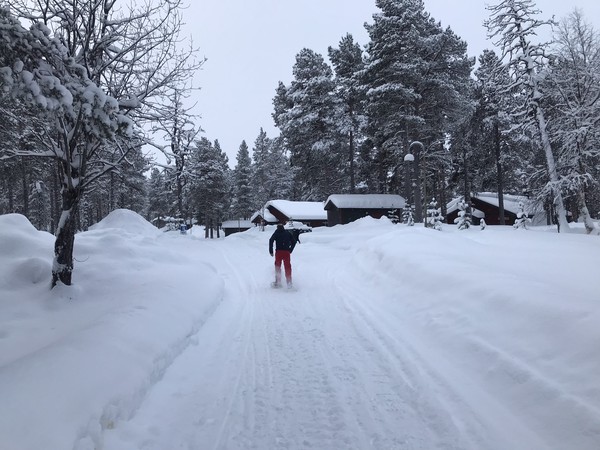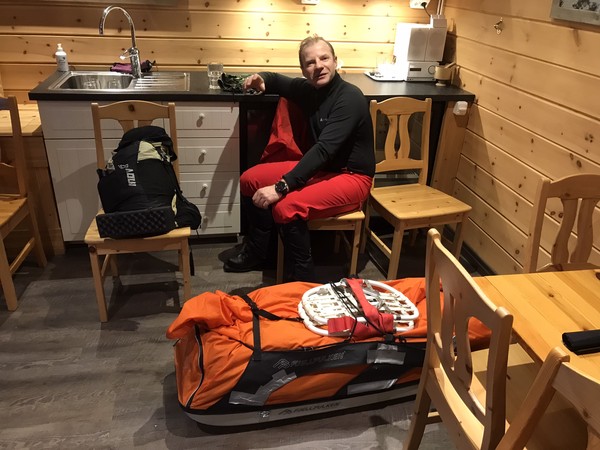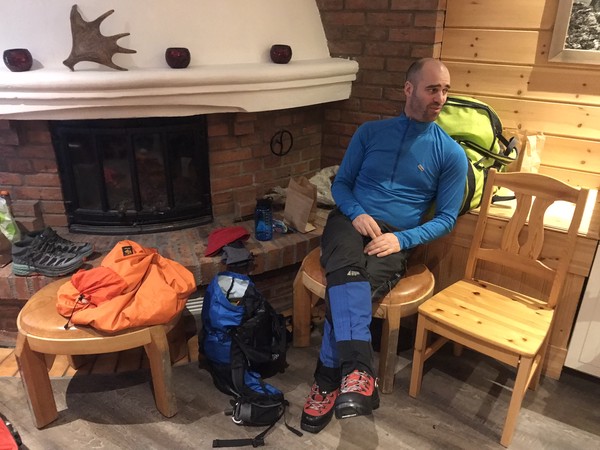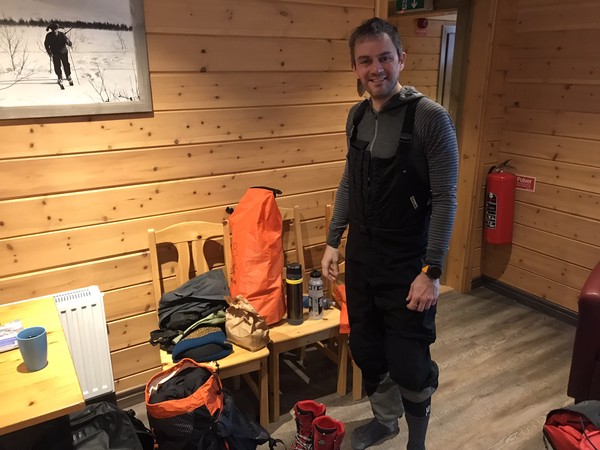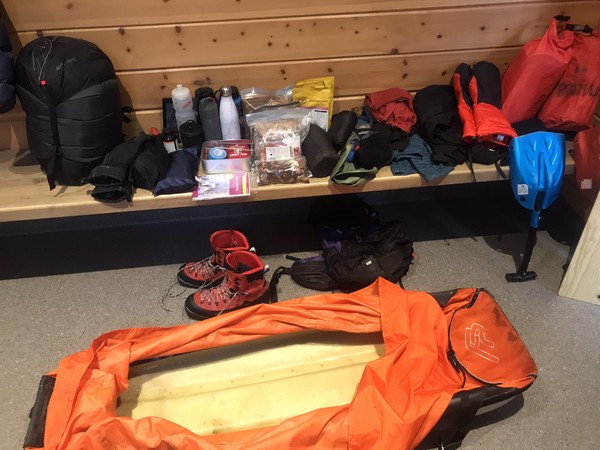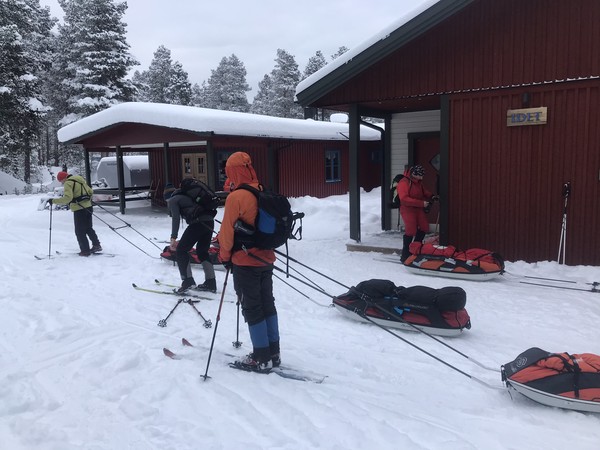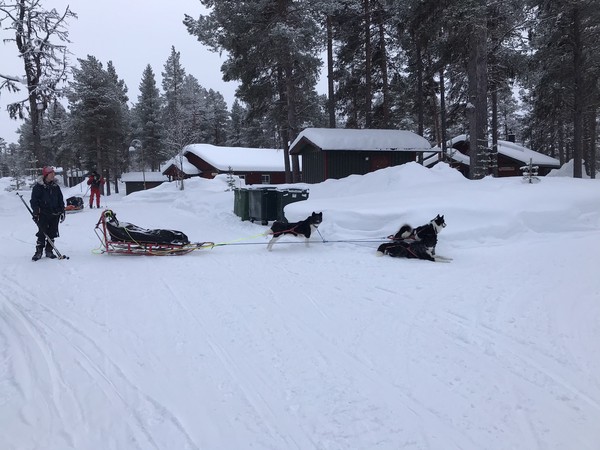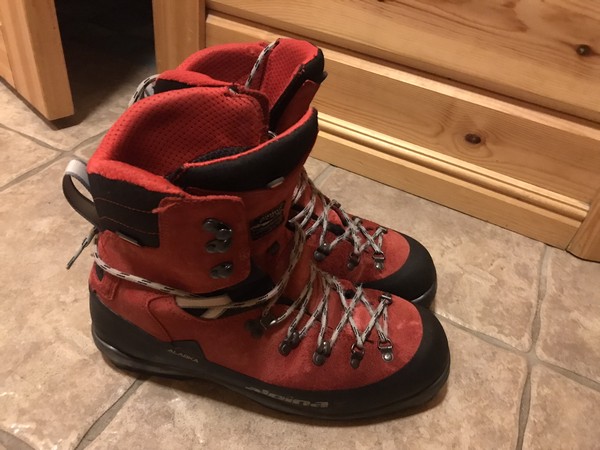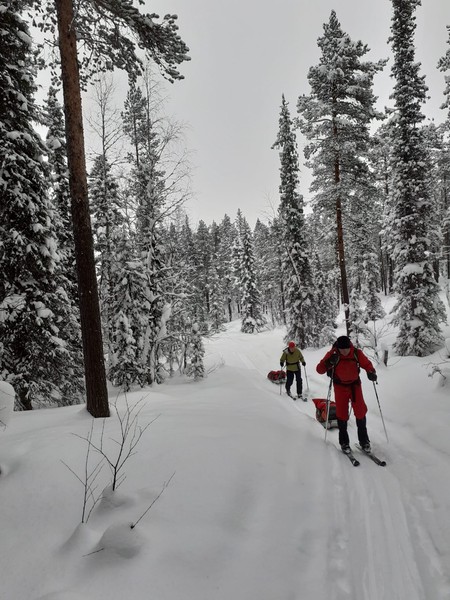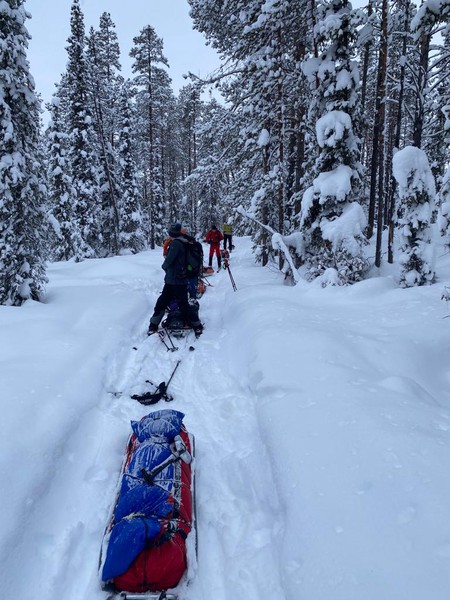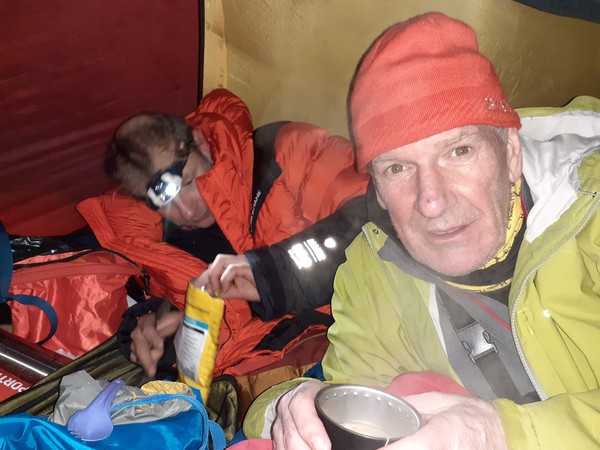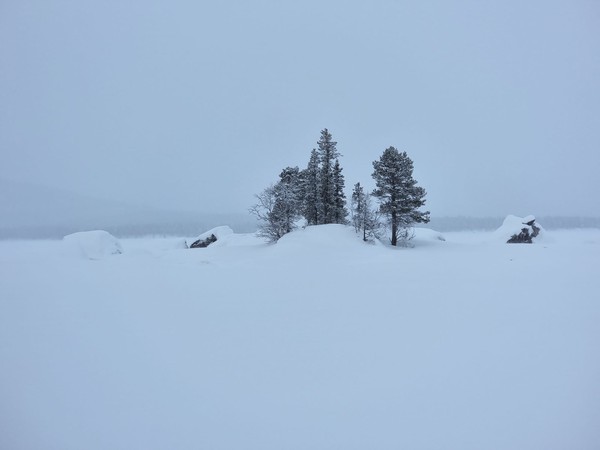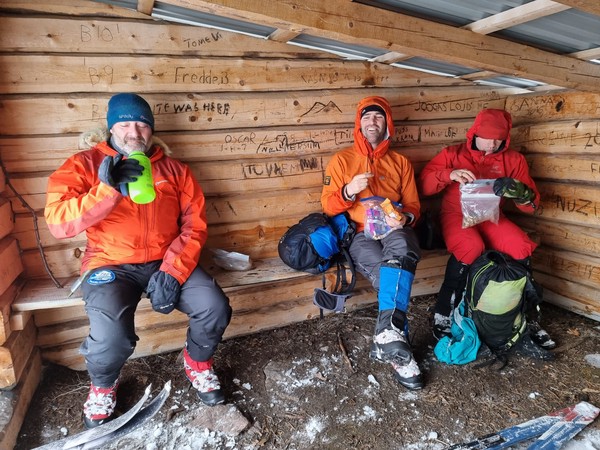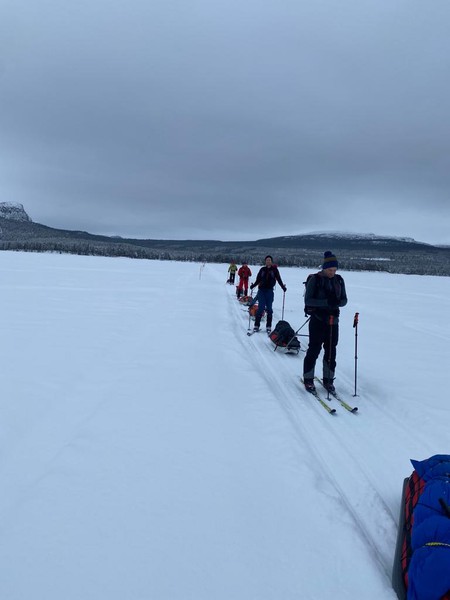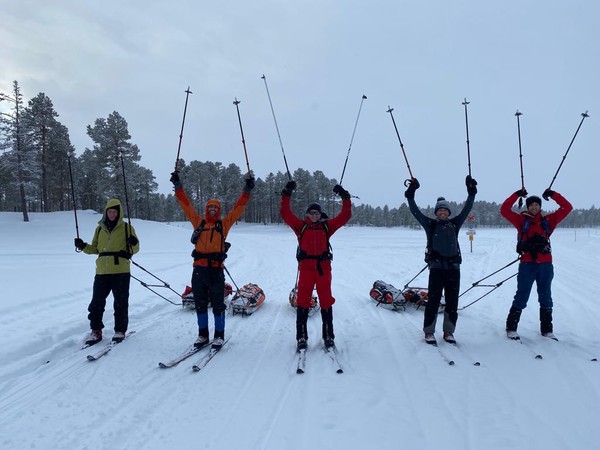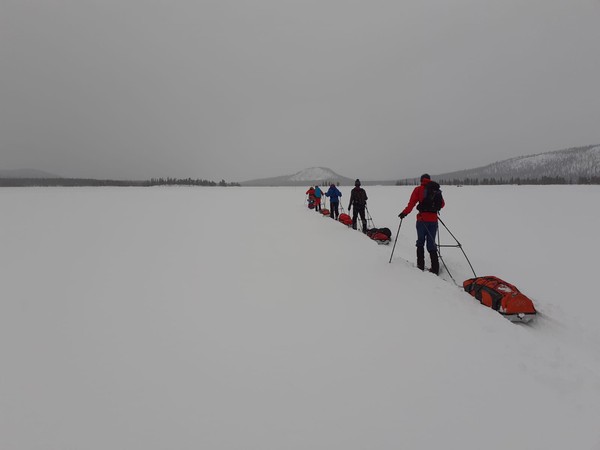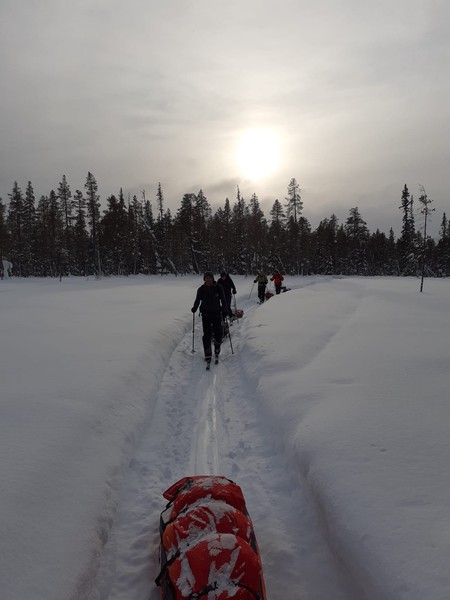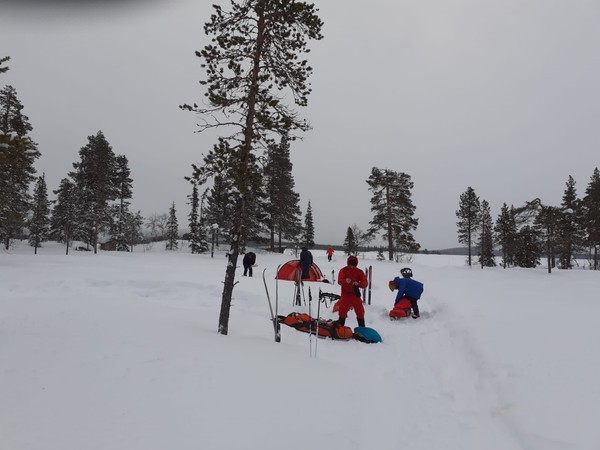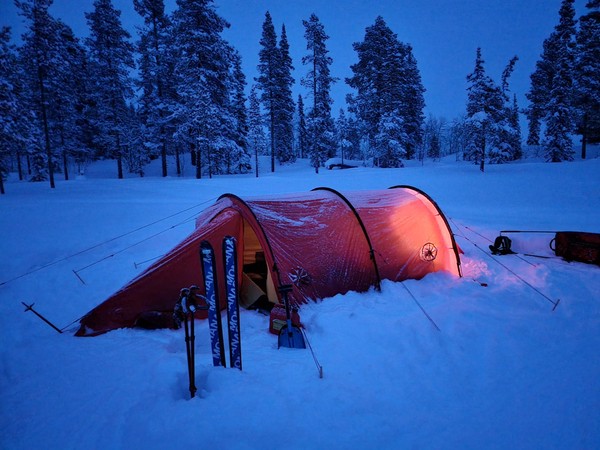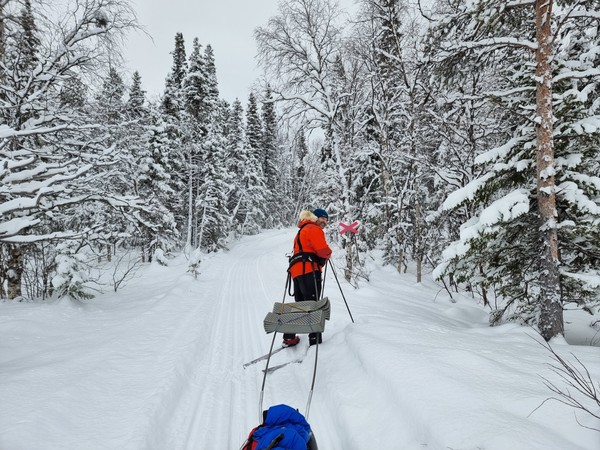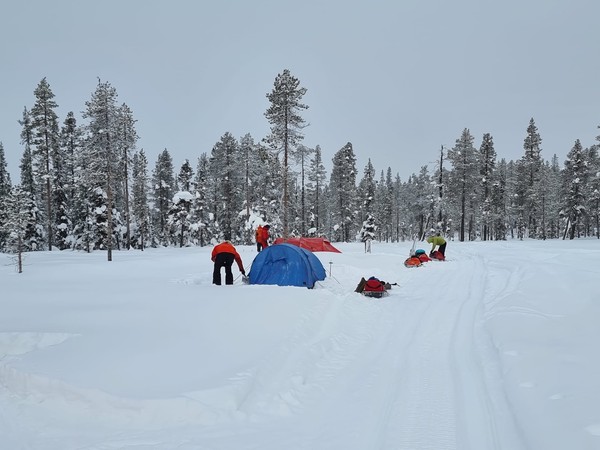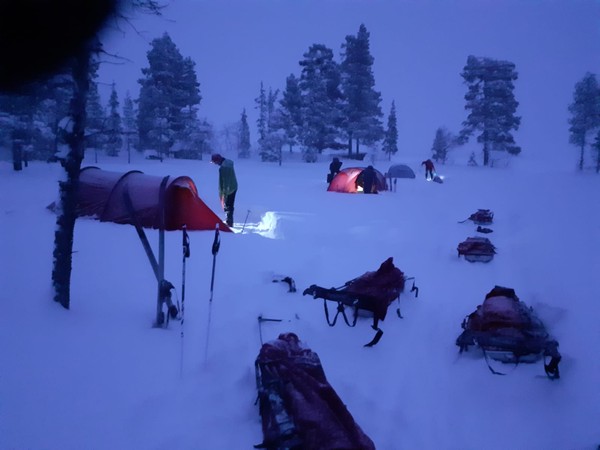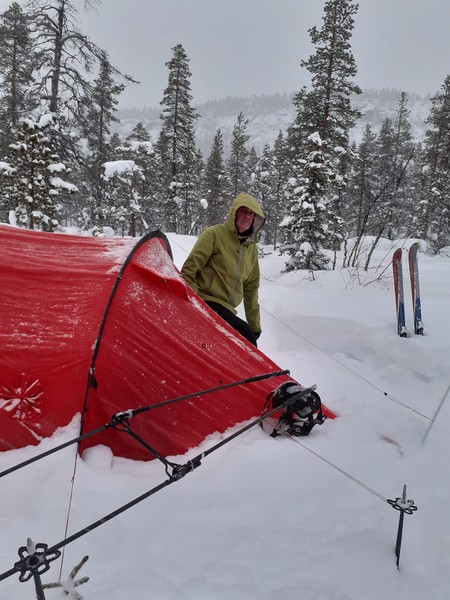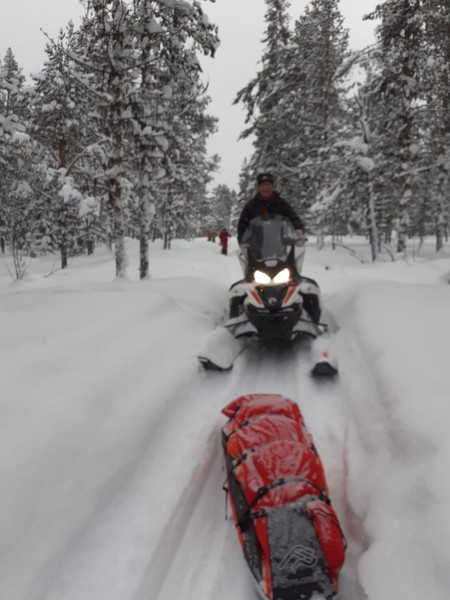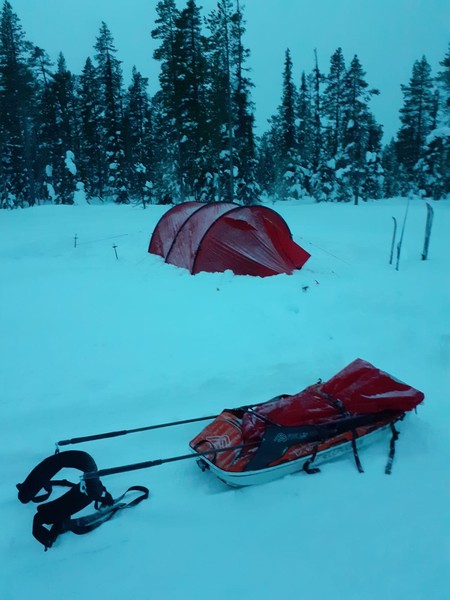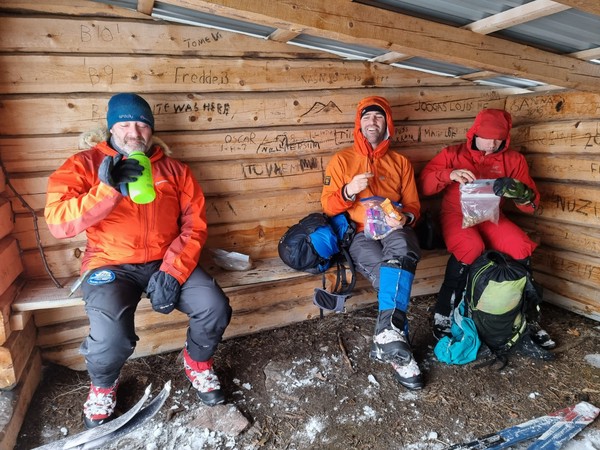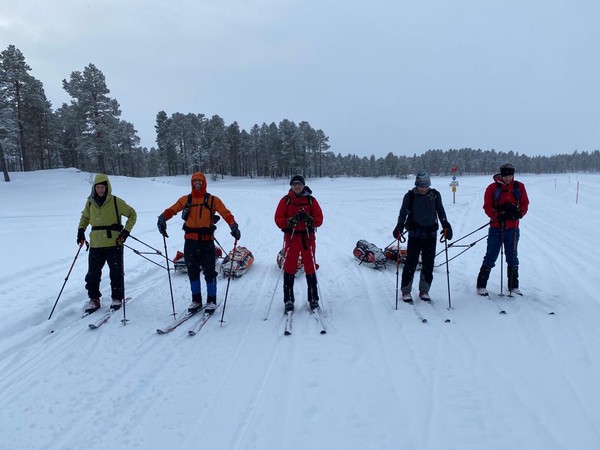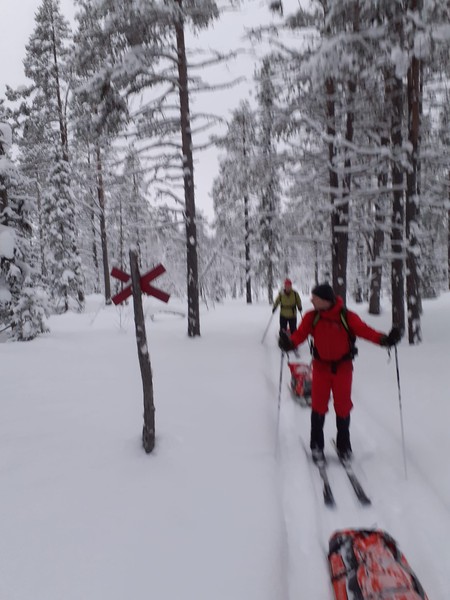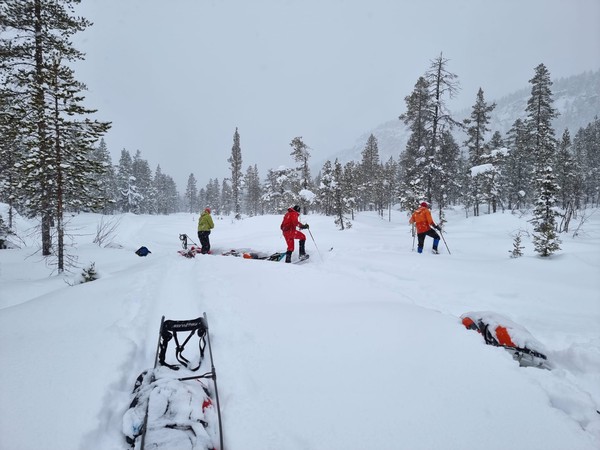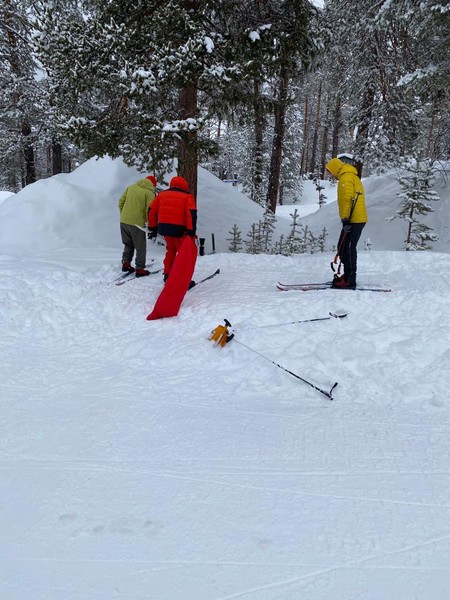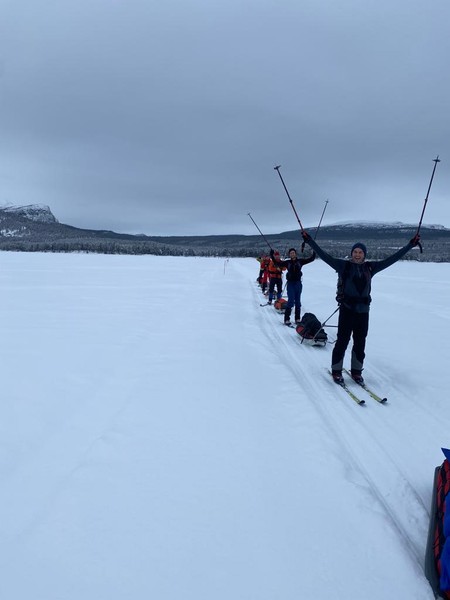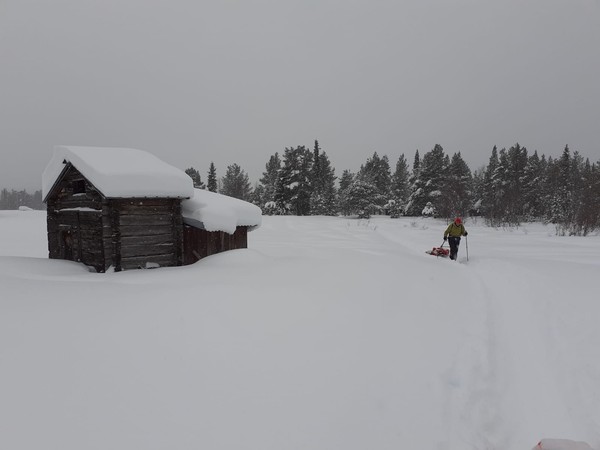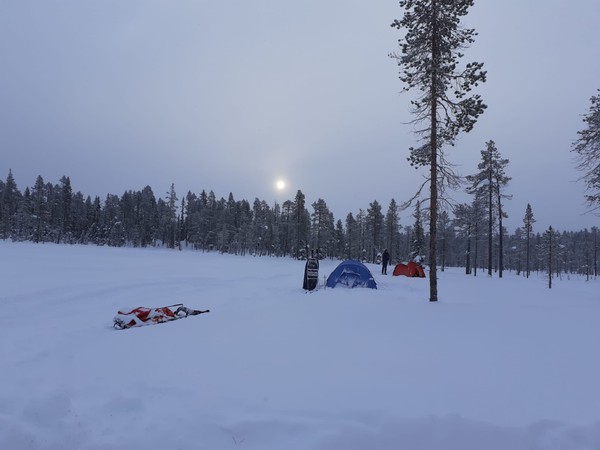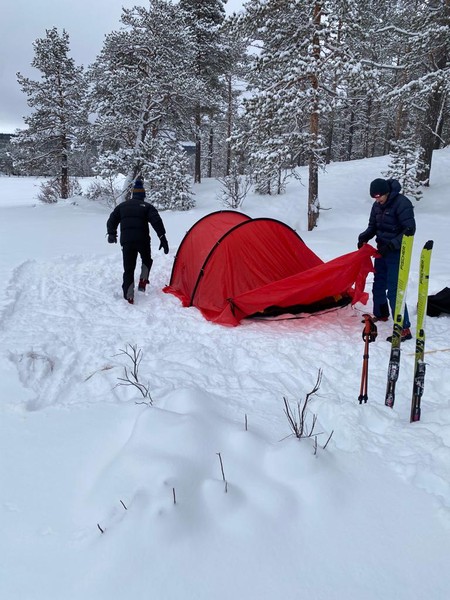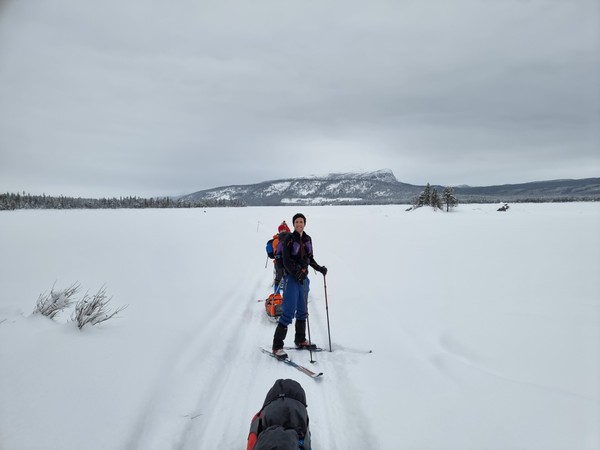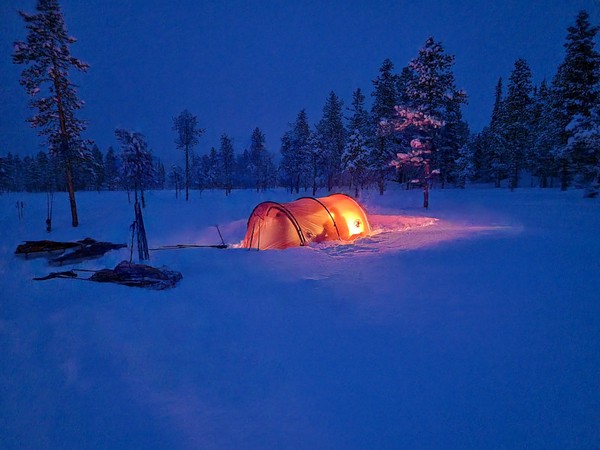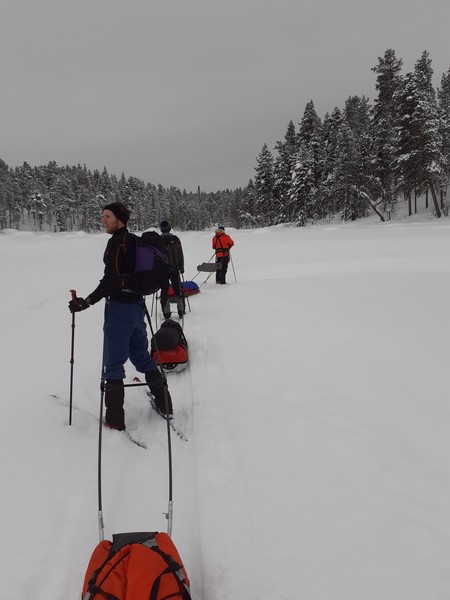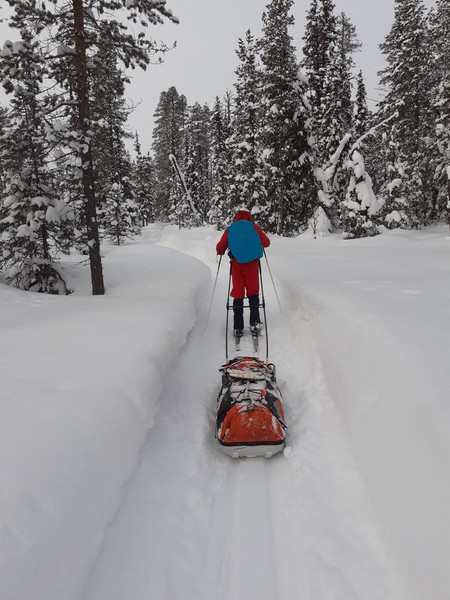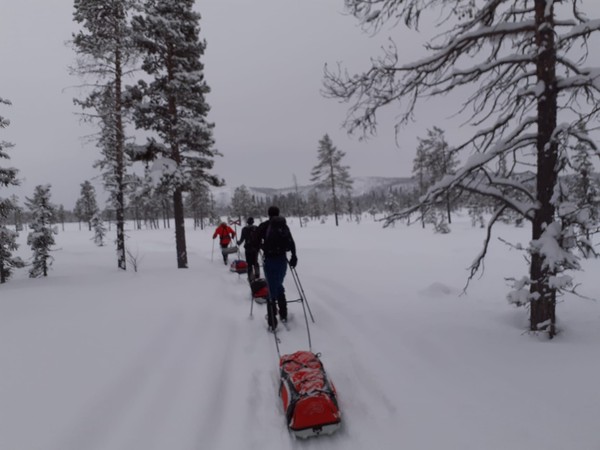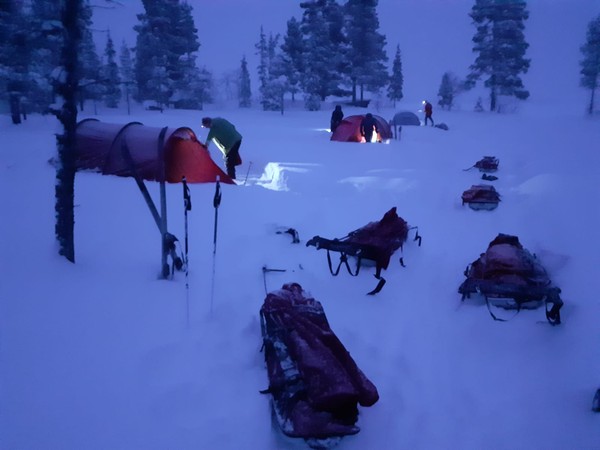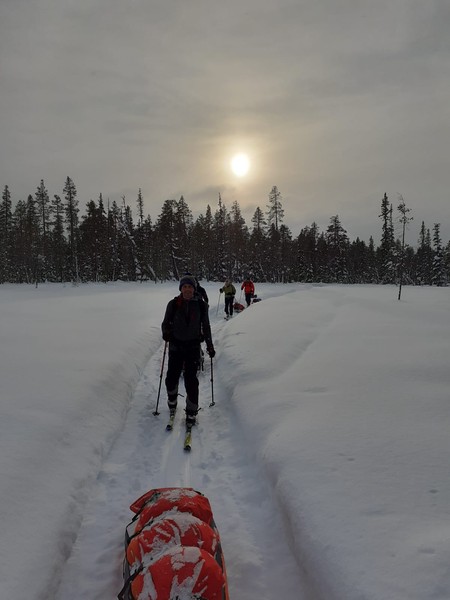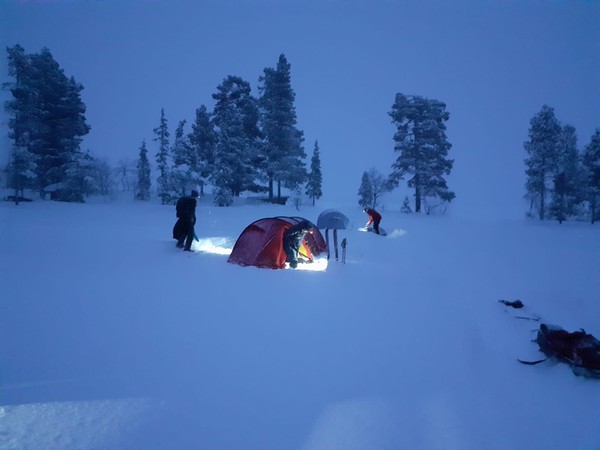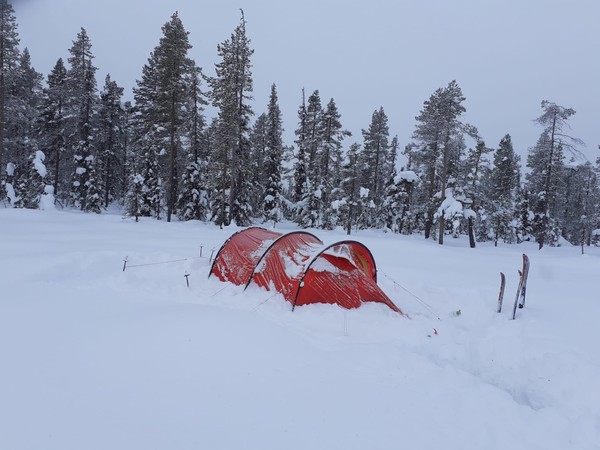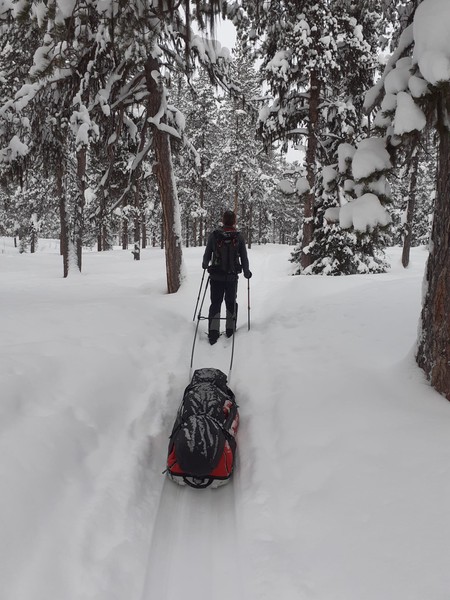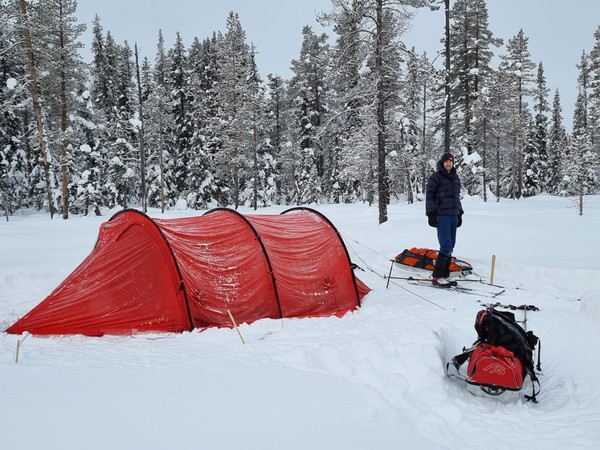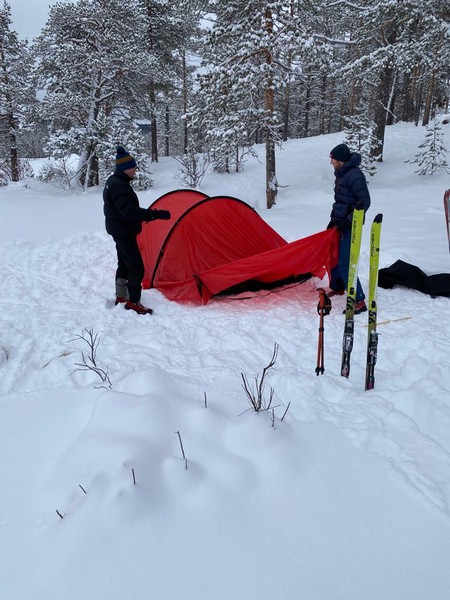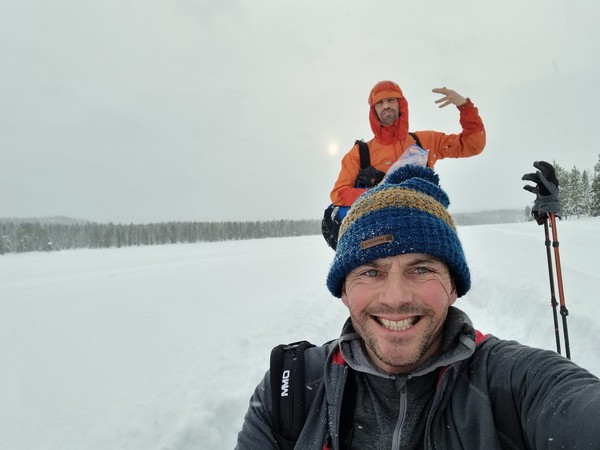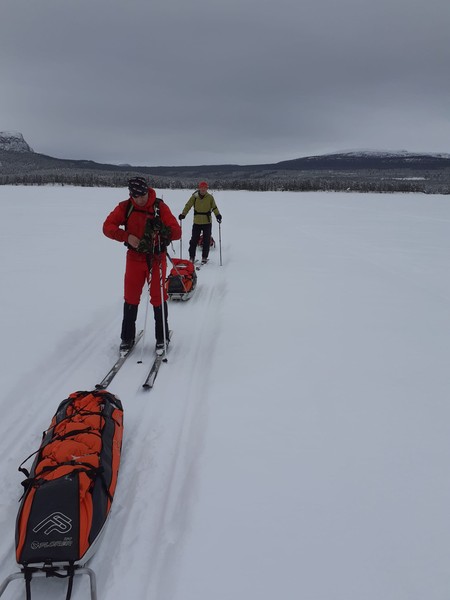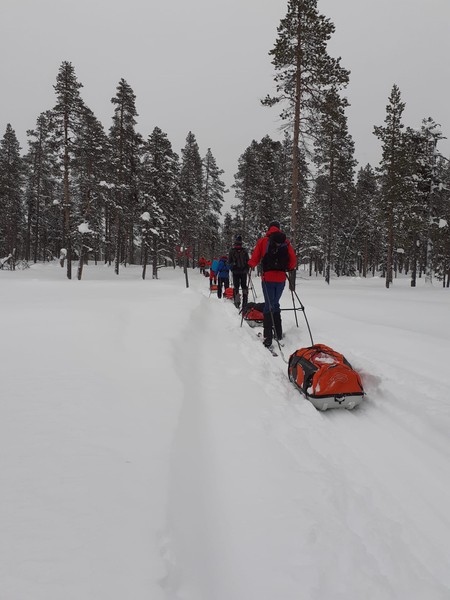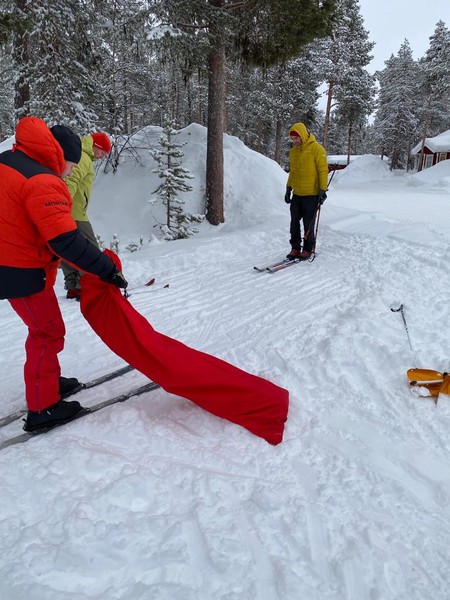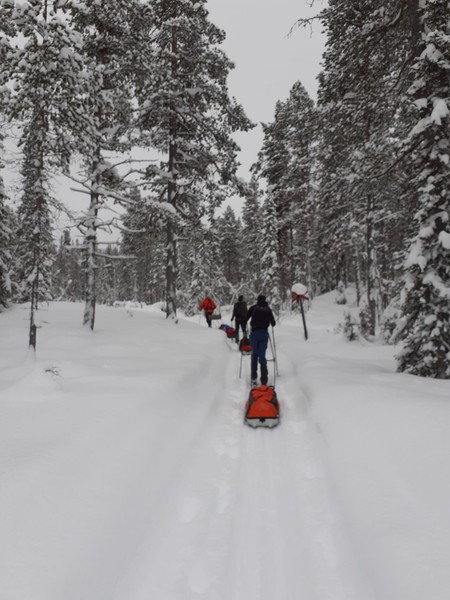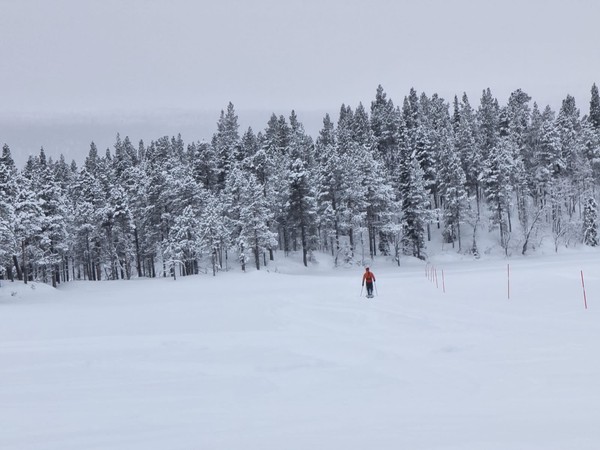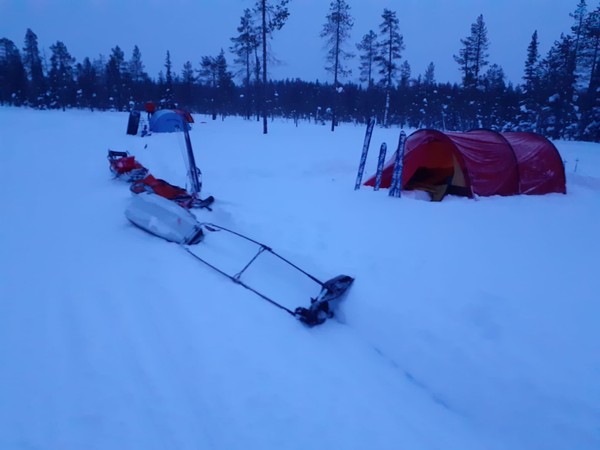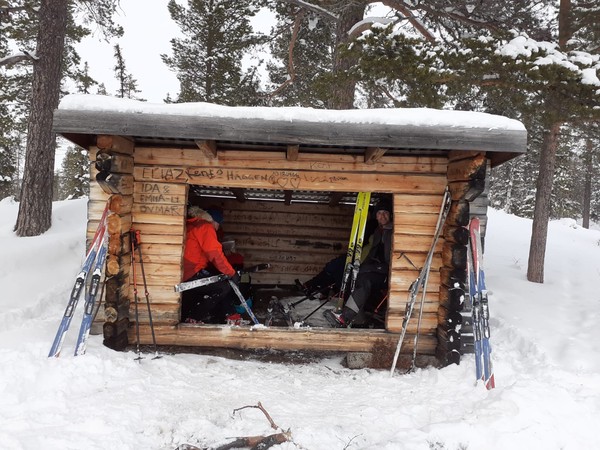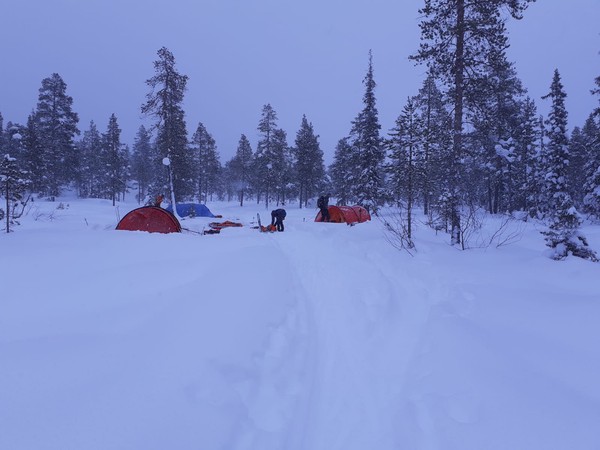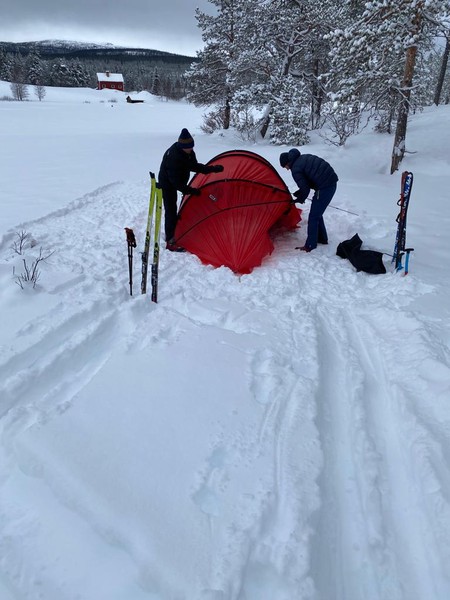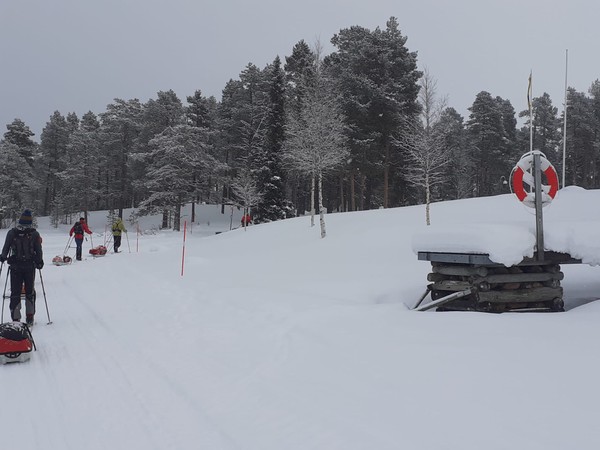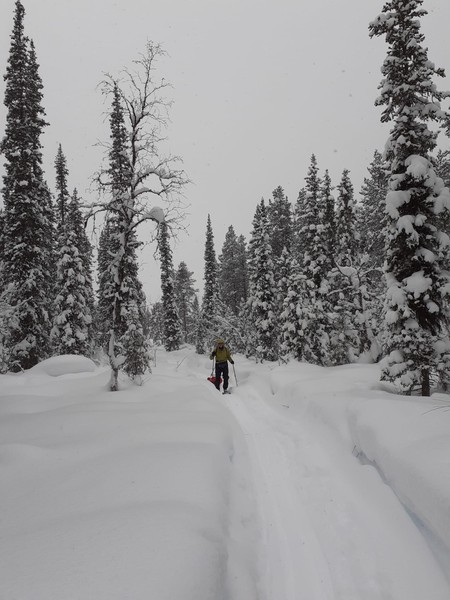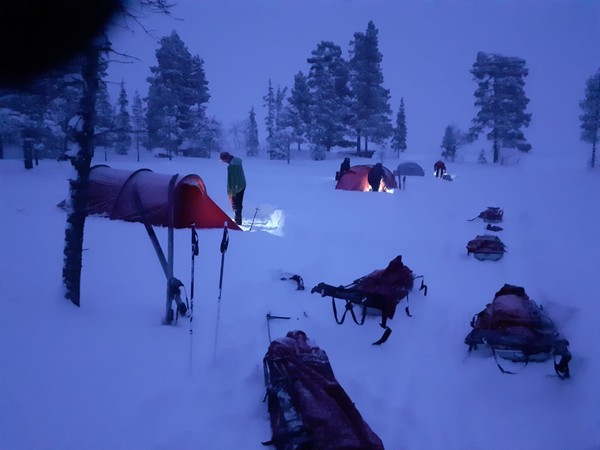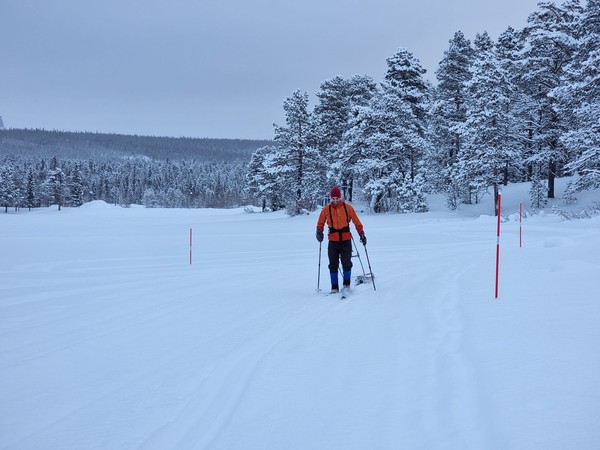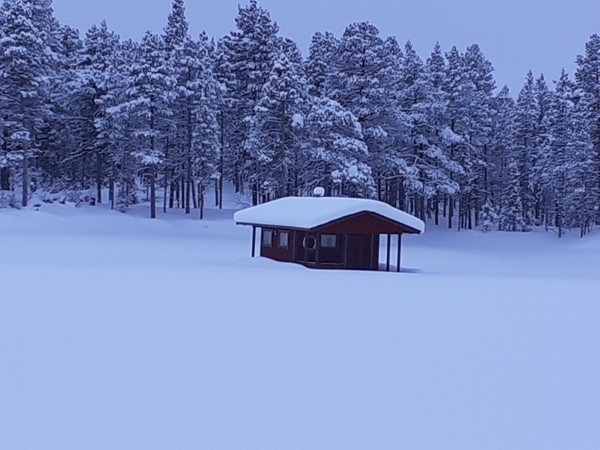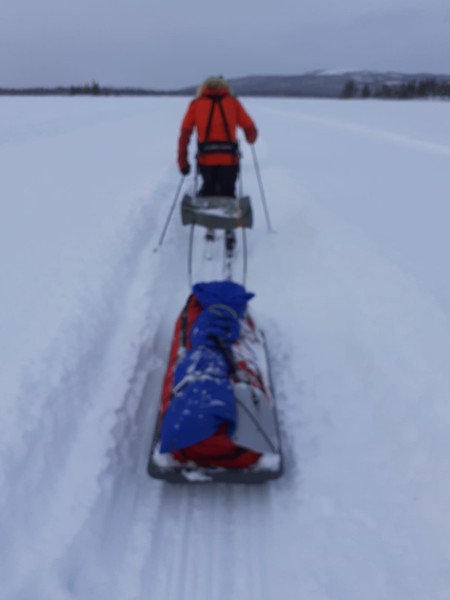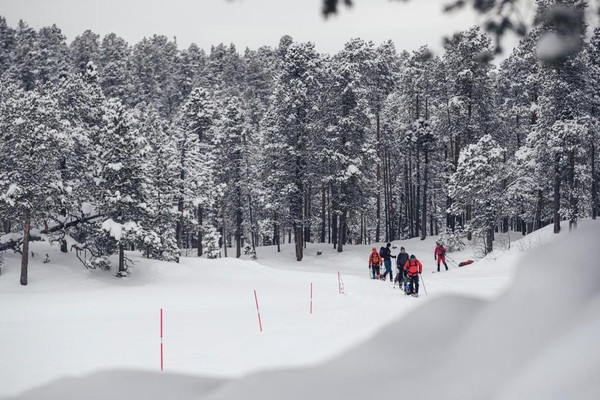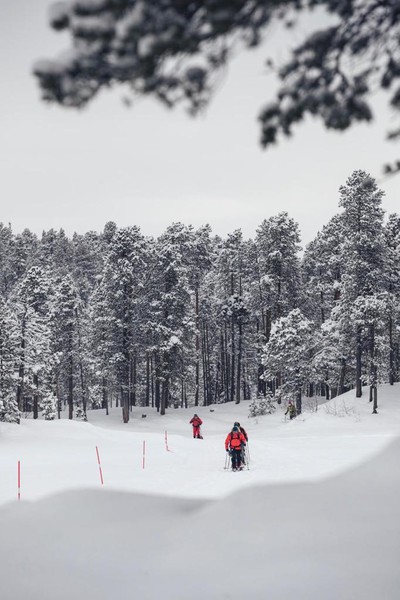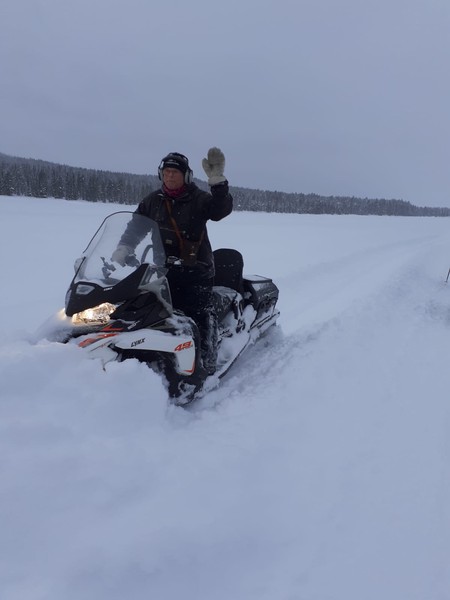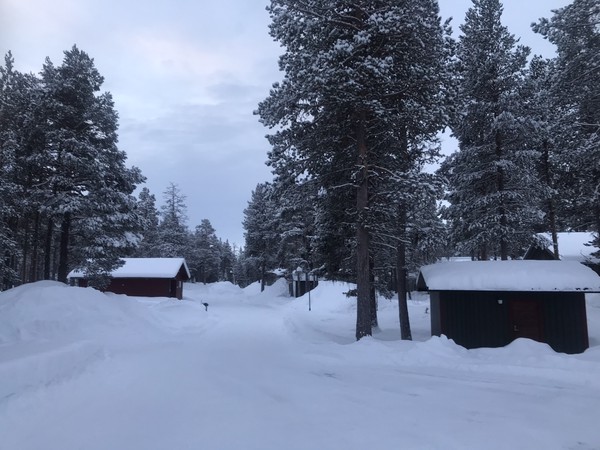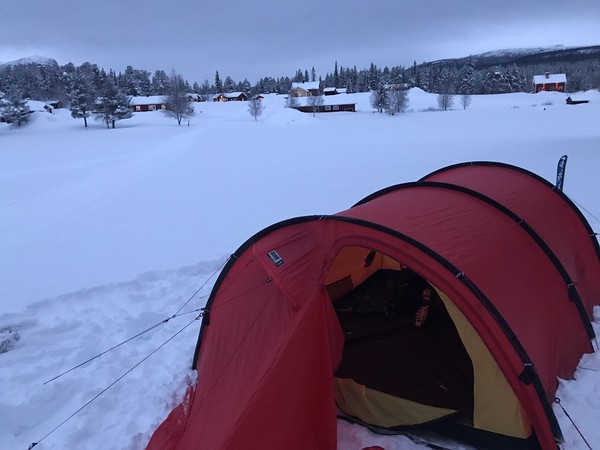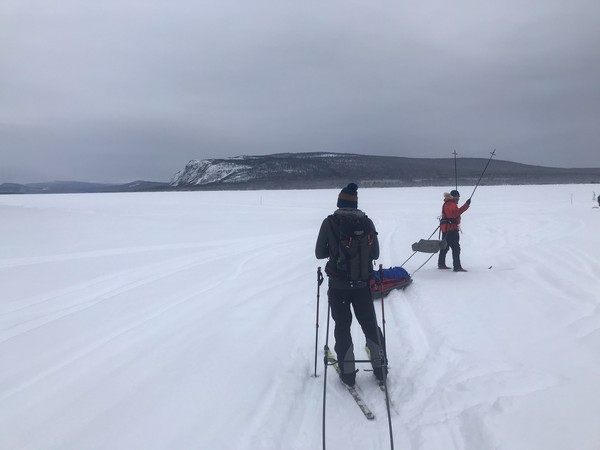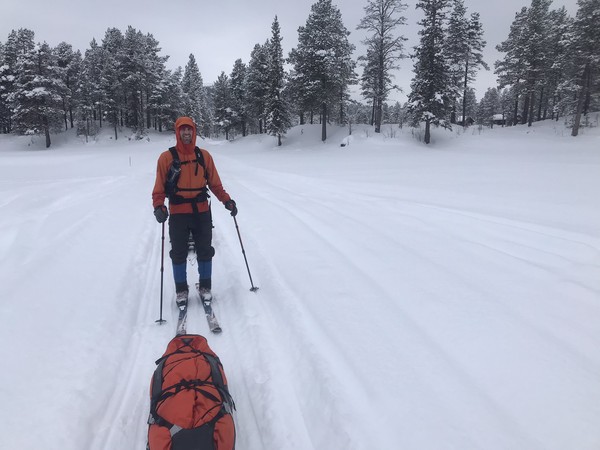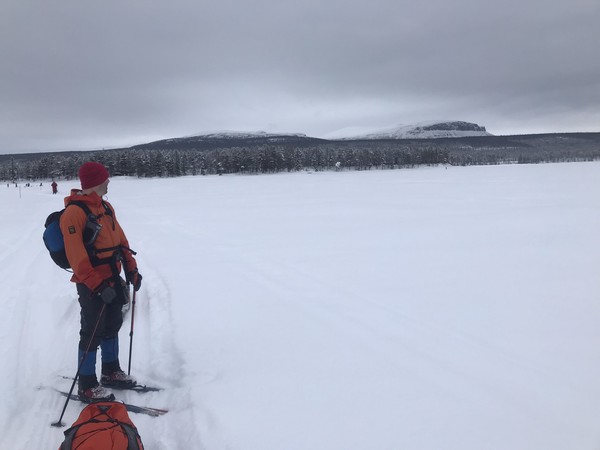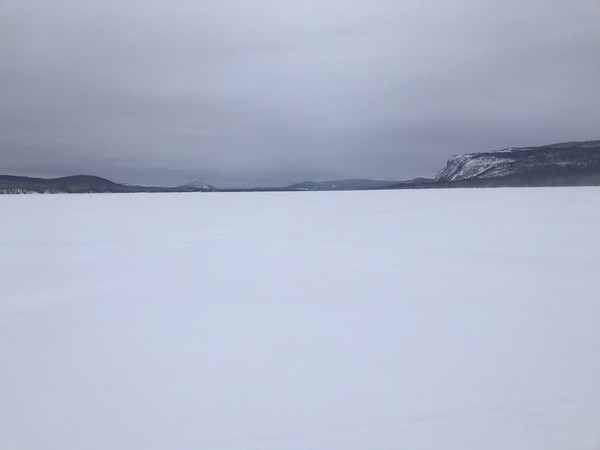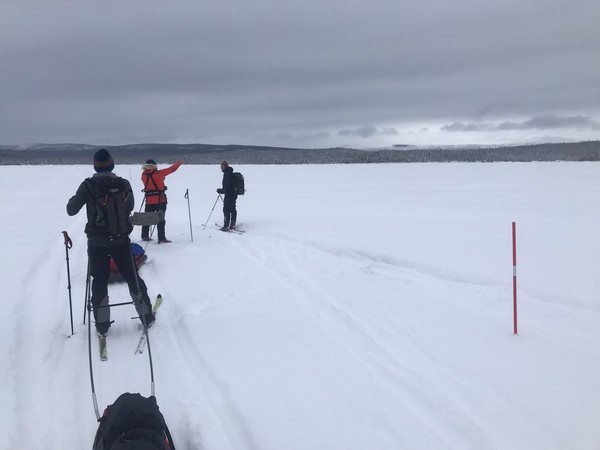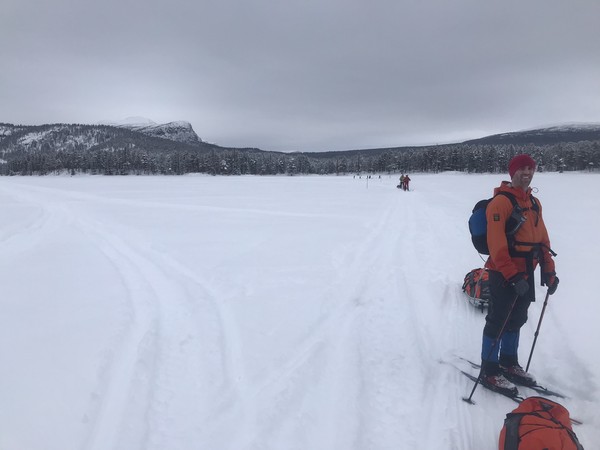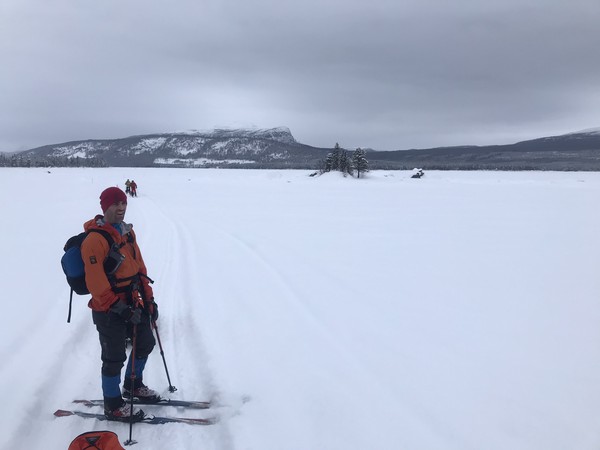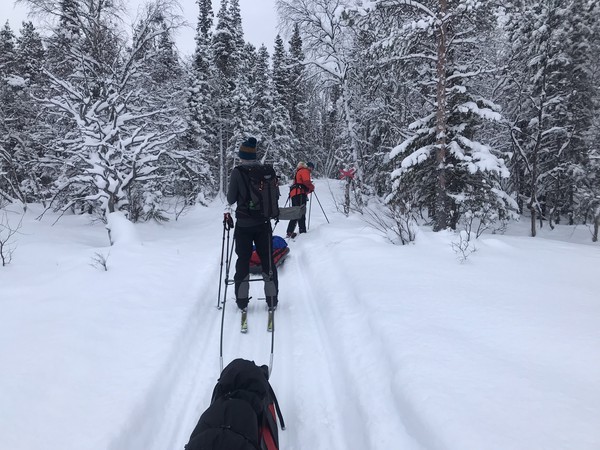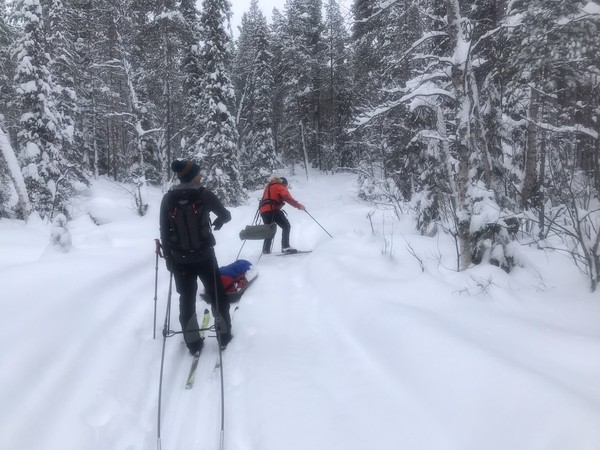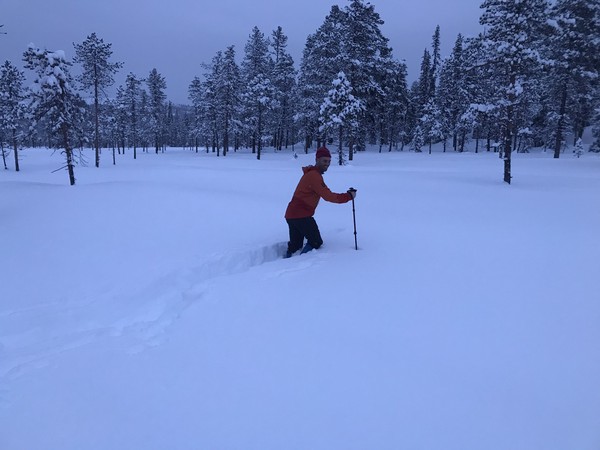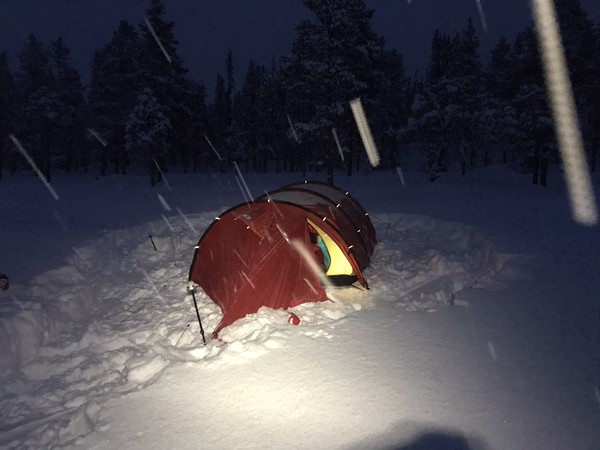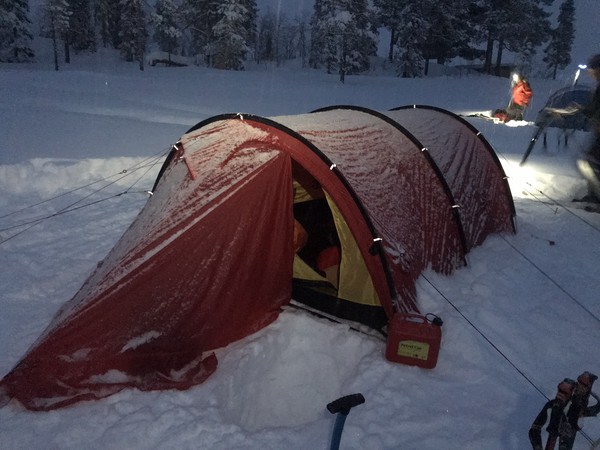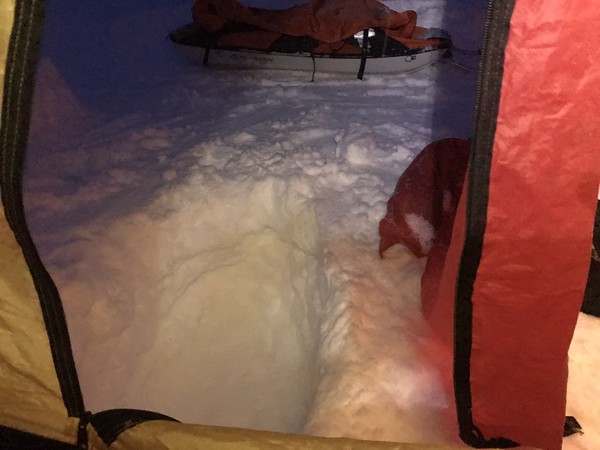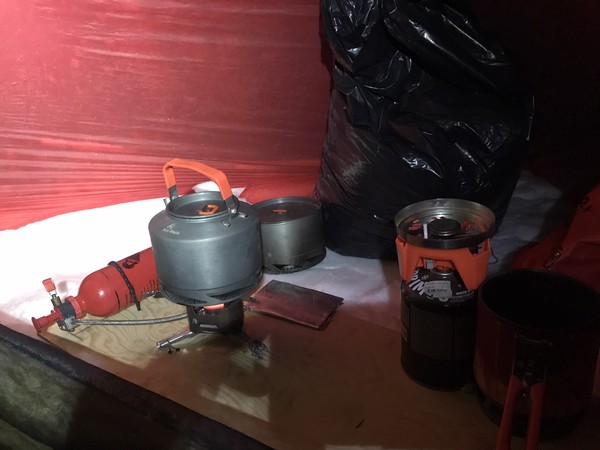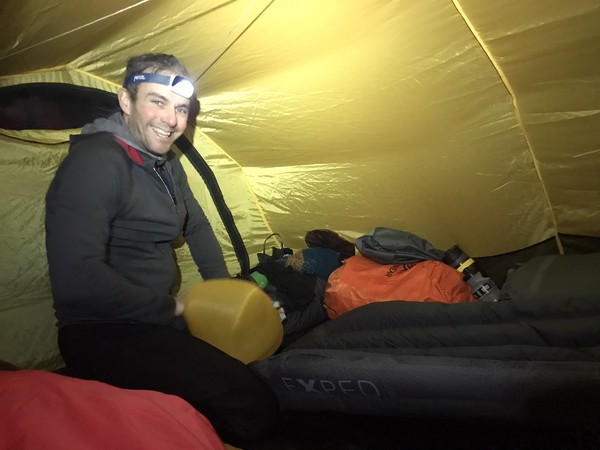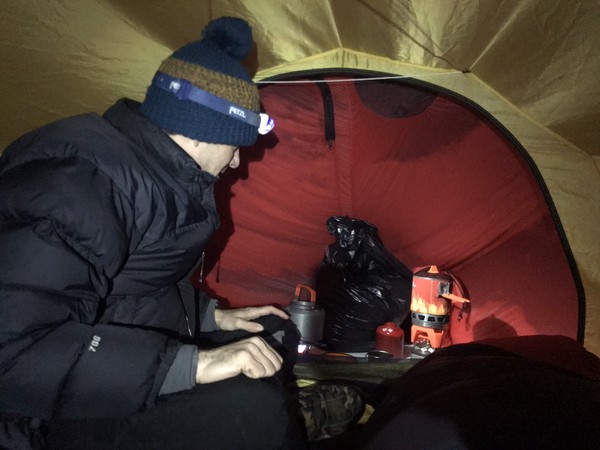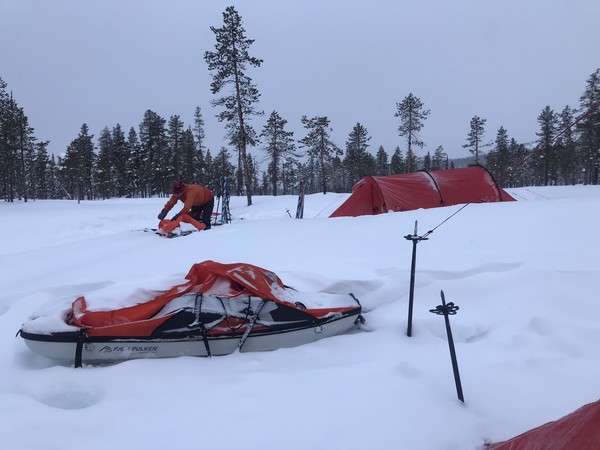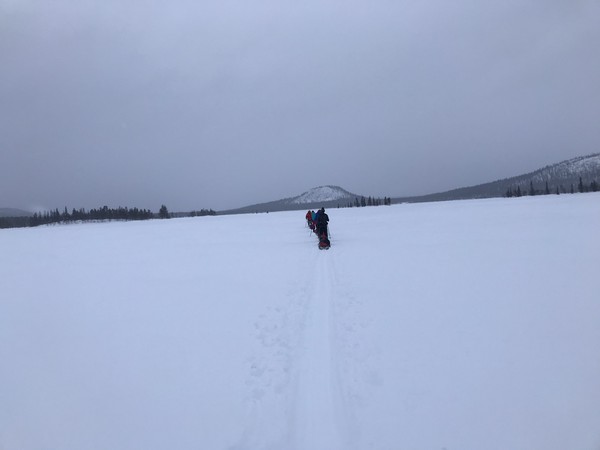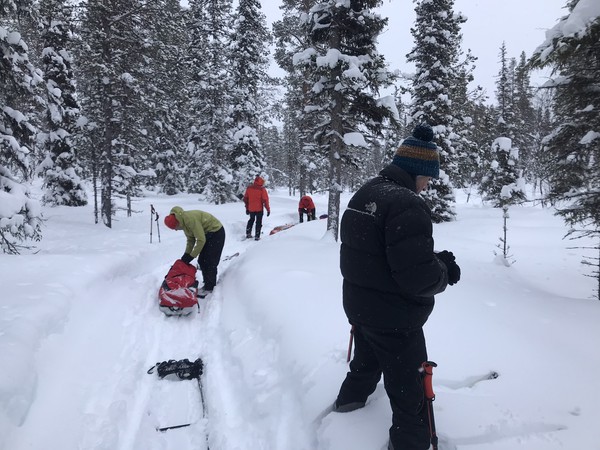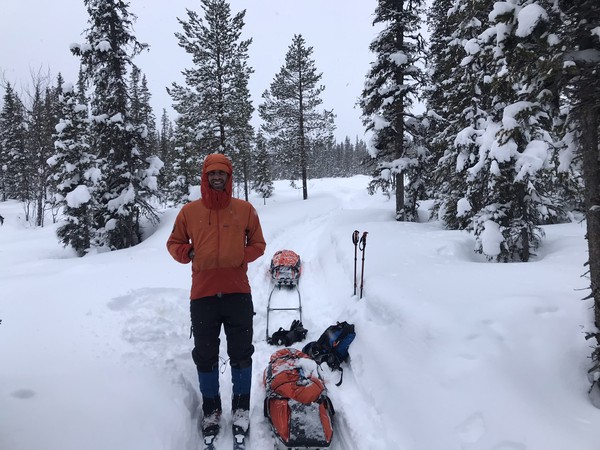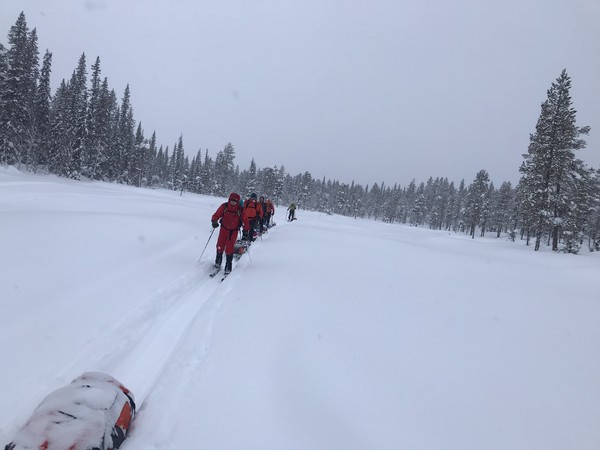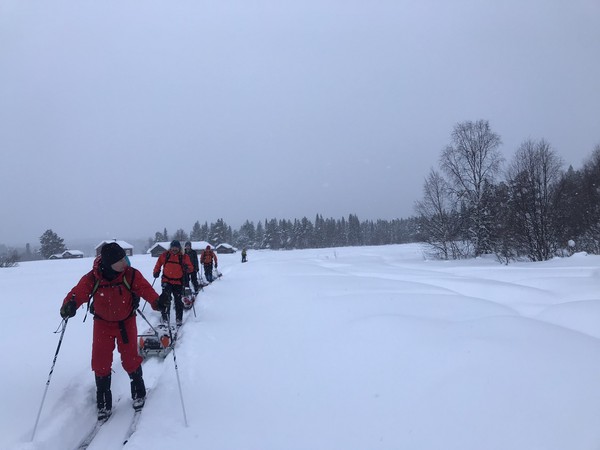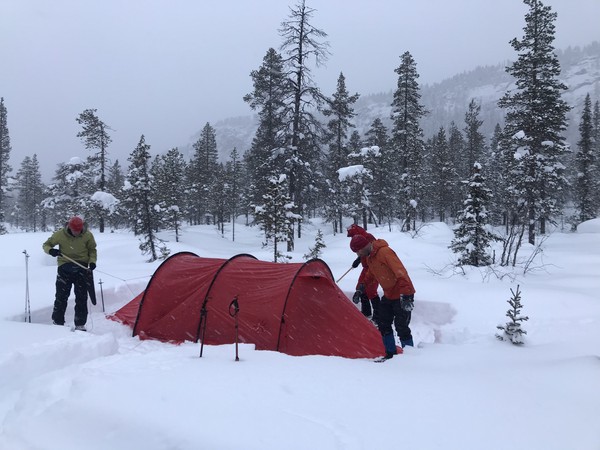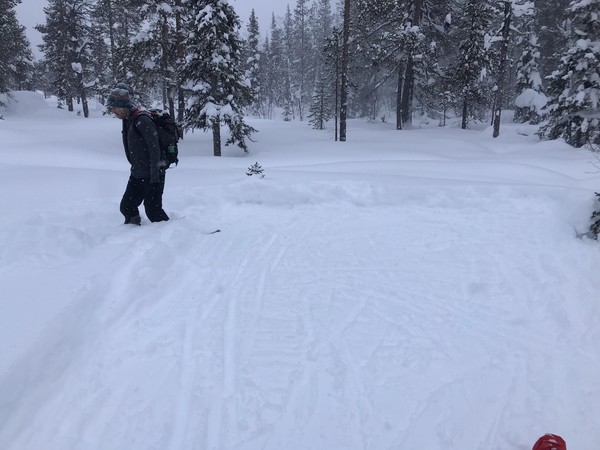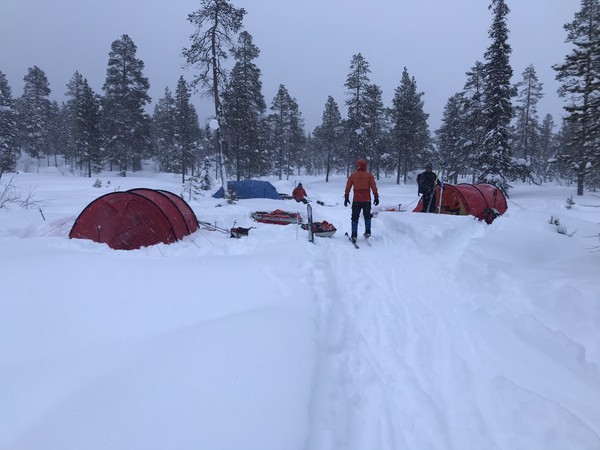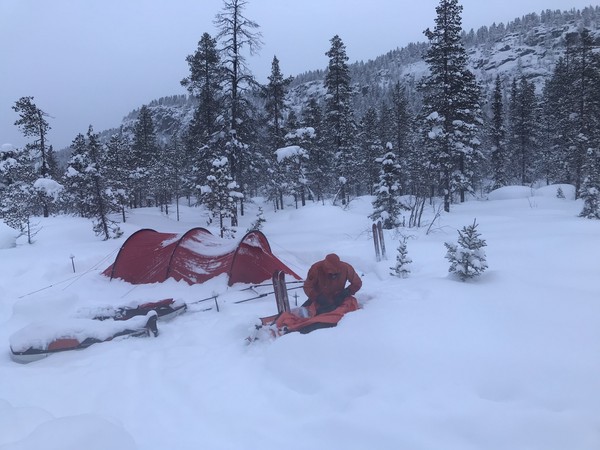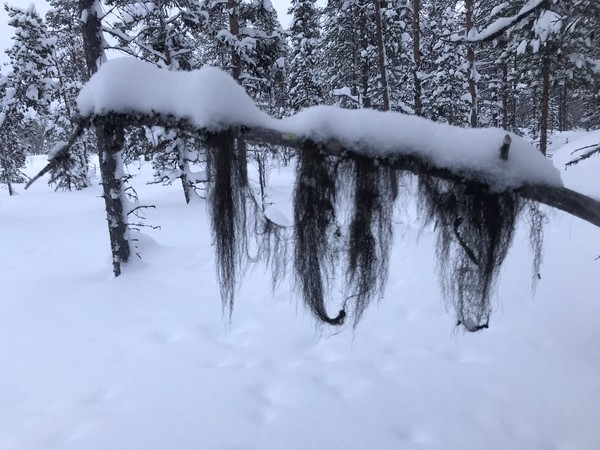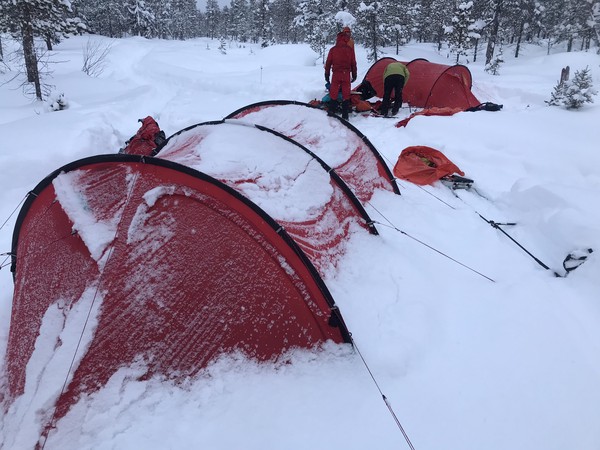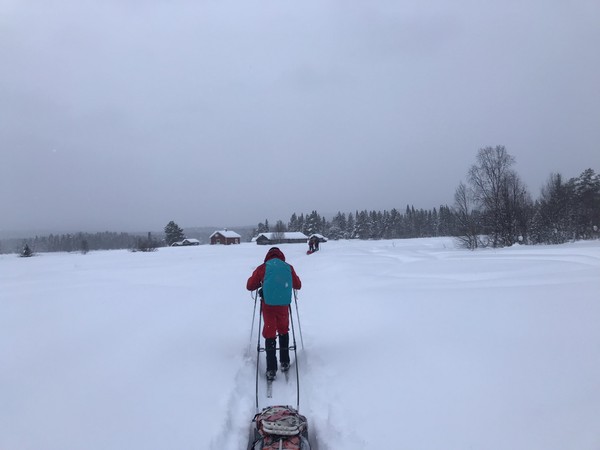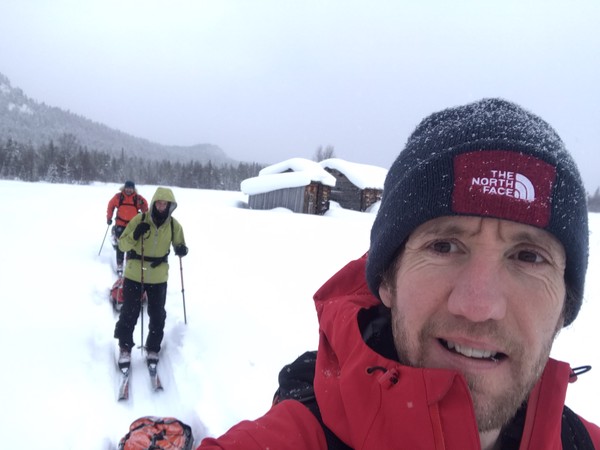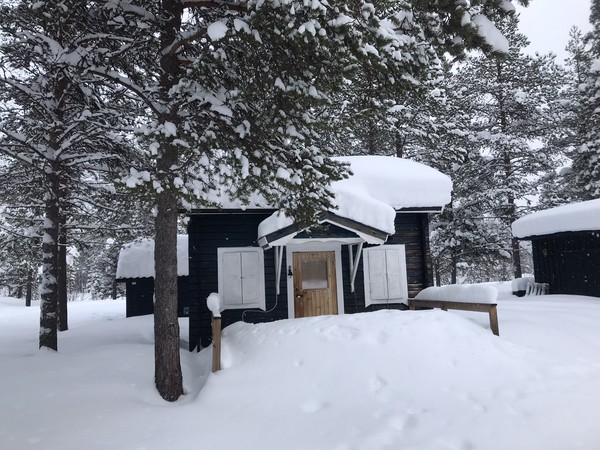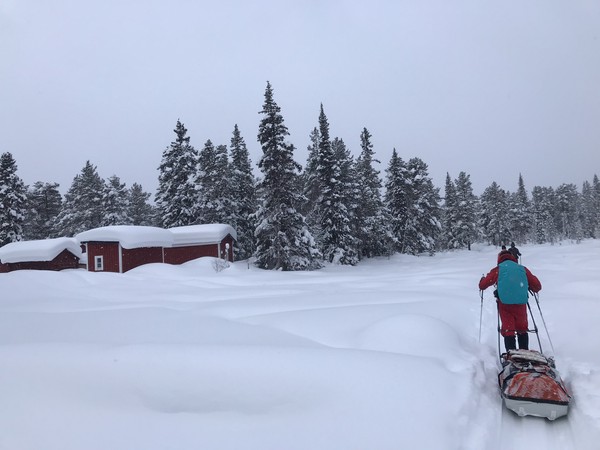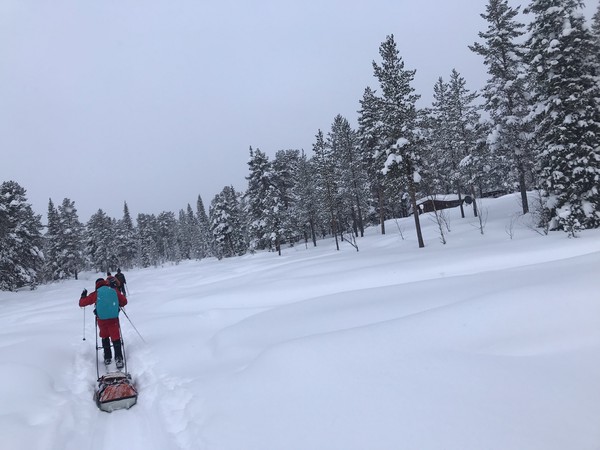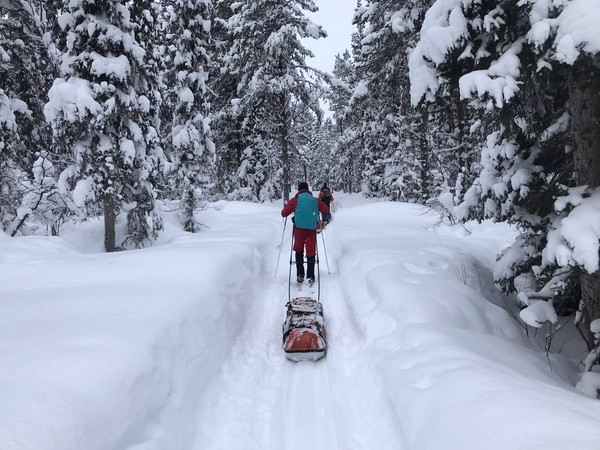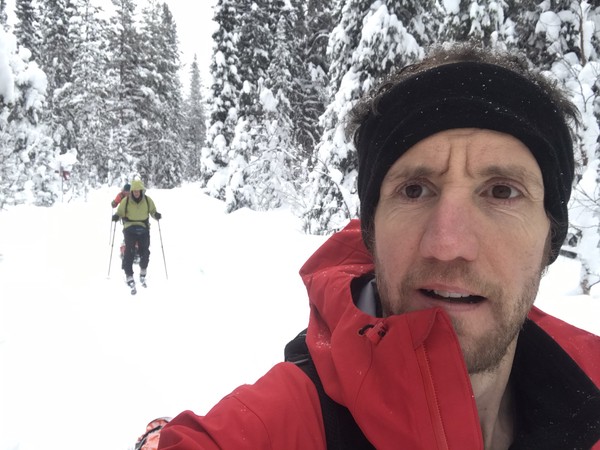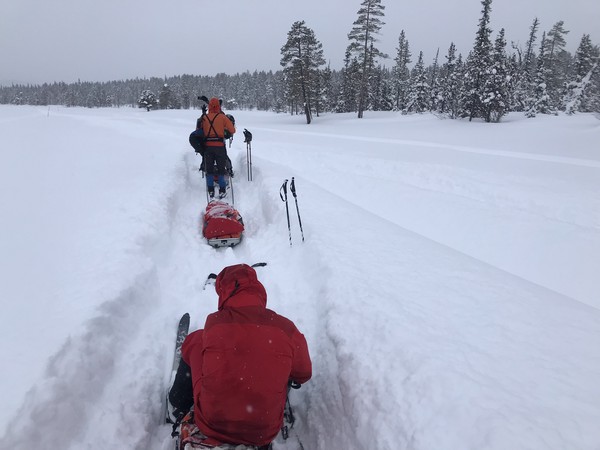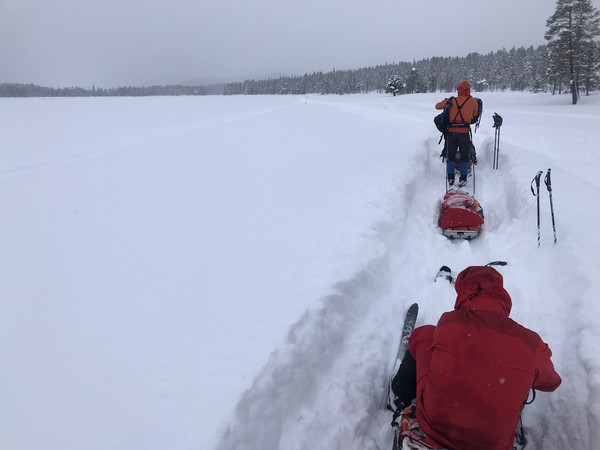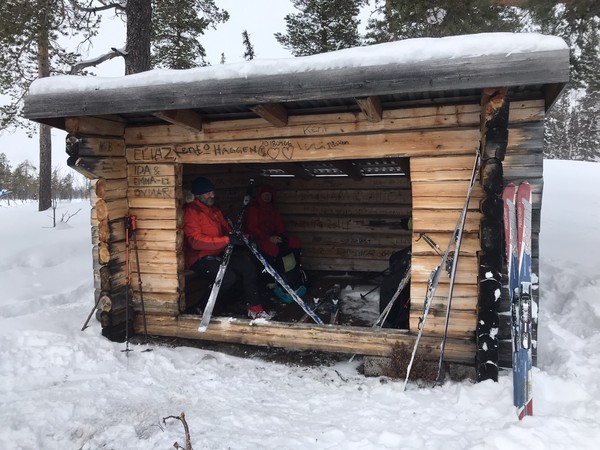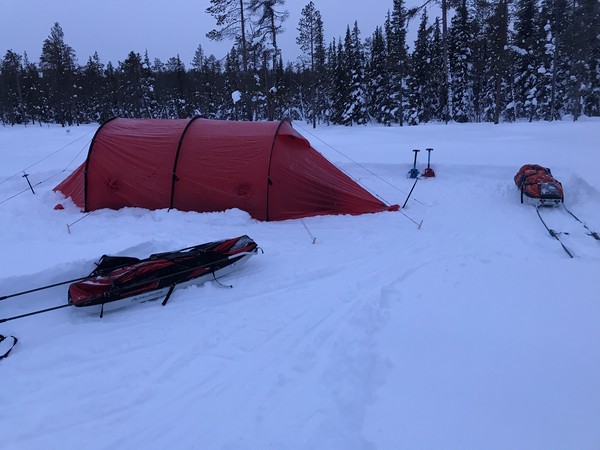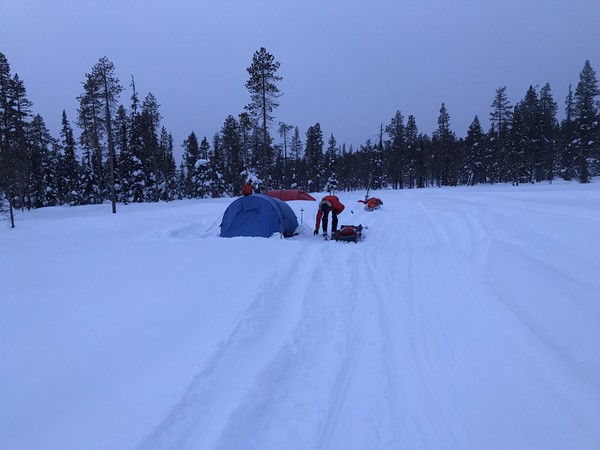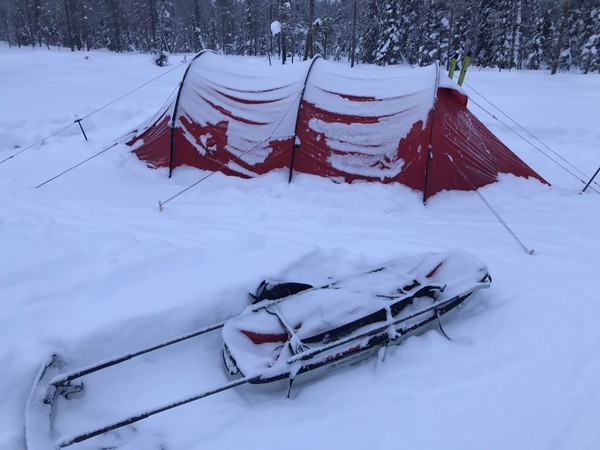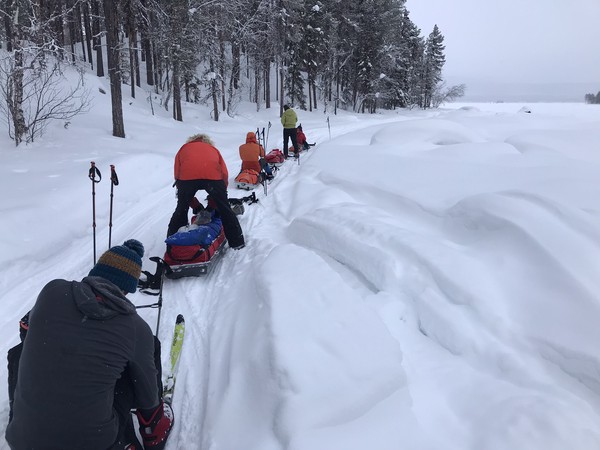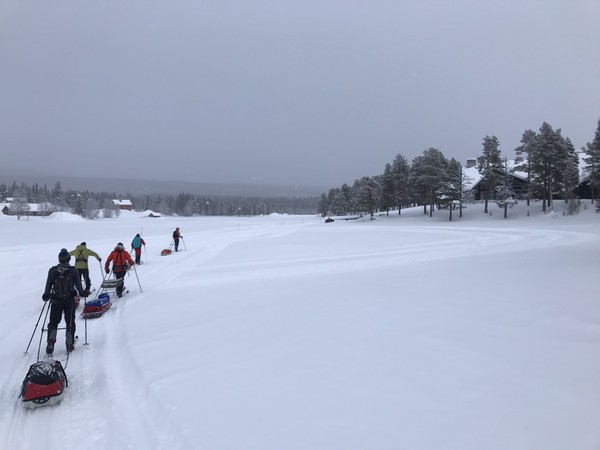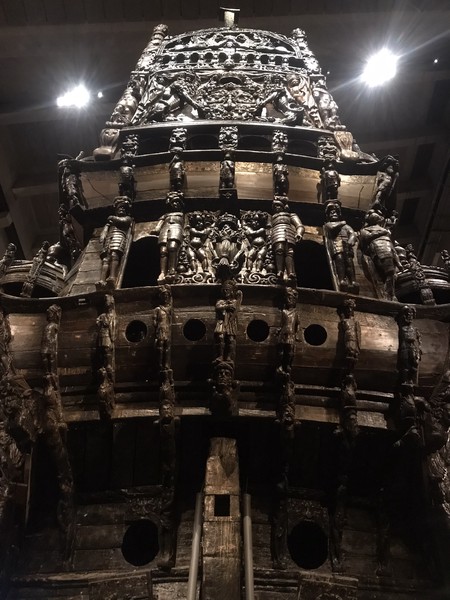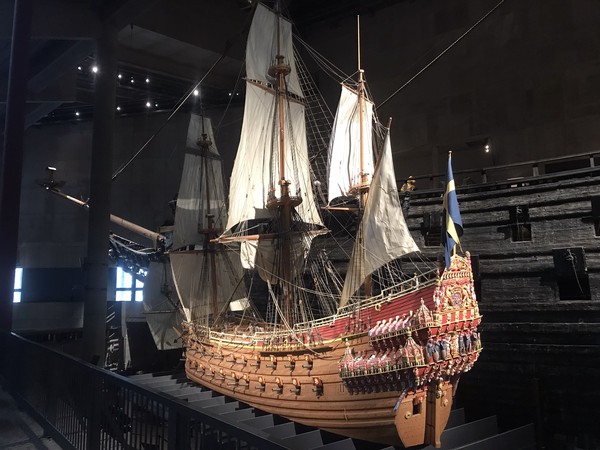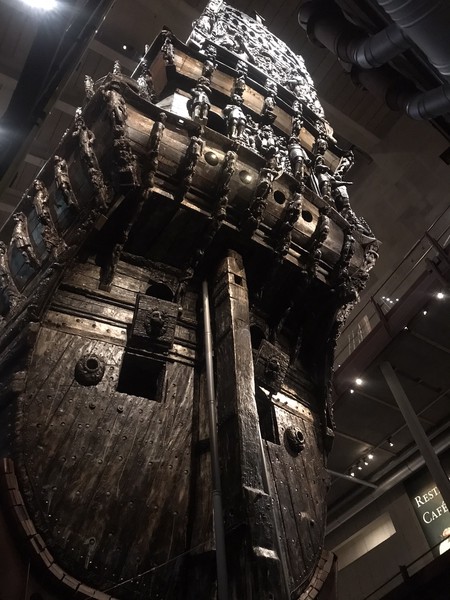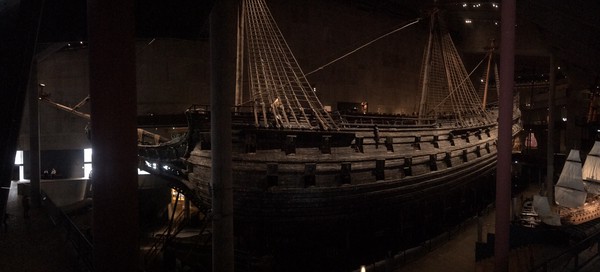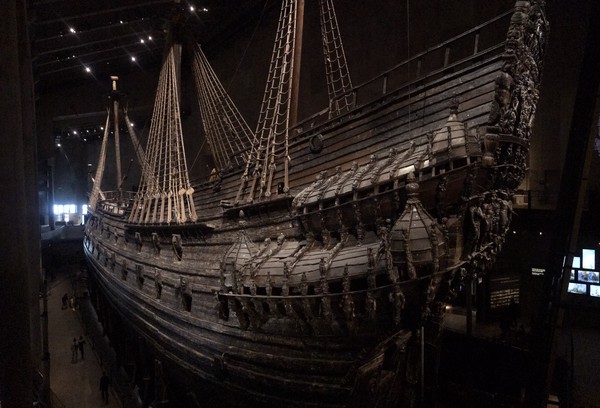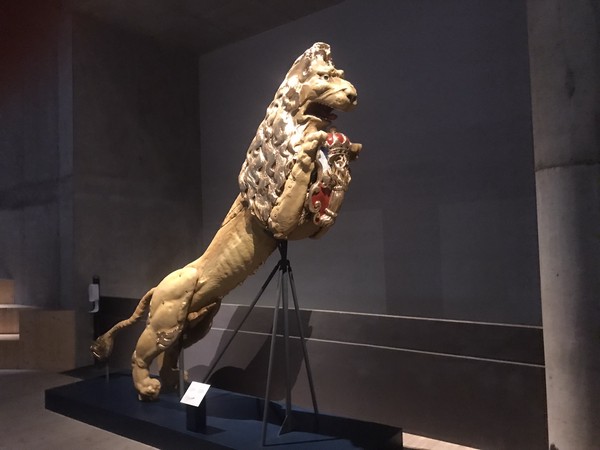Sweden Arctic Training Trip 2022
Rob Brooks
For a while now I’ve been drawn to adventures in the polar climes, having followed races such as the Yukon Arctic Ultra and Iditarod and read a number of books and accounts.
When I heard the Spine team were going to be launching a race based in Arctic Sweden I was immediately interested but also very apprehensive. I have spent many a day and night in some pretty horrendous conditions in the UK but nothing like surviving in temperatures as low as -40 degrees C, strong winds and limited daylight hours.
When the training week was announced I immediately signed up - it was an ideal opportunity to learn the skills I would need, and also get first hand experience of the conditions I’d be facing and meet other like minded people.
Arrival in Stockholm
I thought I would spend a few days in Stockholm before heading north to see a bit of the city. Its a beautiful place which I barely scratched the surface of. I concentrated on the old town and surroundings and also some of the vast parks which surround the city. It was pretty cold there but not a patch on what was to come ….
Lulea
I left Stockholm and travelled to Lulea, a small town on the edge of the arctic circle. I was instantly struck by how cold it was and how much snow there was - vast swathes of it were piled up alongside the roads, more than I’d ever seen in my life. On checking into the hotel I met Rob, another course participant and we decided to go out exploring. Lulea is a coastal town and the surrounding sea was frozen solid. Every year they build a skating track around it so we went for a blast around it on one of the many kick skating sledges dotted around - quite an experience although I was glad to get back into the warmth of a local restaurant where we ate and discussed the forthcoming adventure.
In the morning we met the other course participants - Doug, Alan and another Rob!! And also Phil, our course leader and mentor for the next week.
From there we drove north to JokkMokk where got our ski boots fitted and sampled some Reindeer Pizza (Reindeer would be a course staple throughout the trip) before driving to our final destination, Arrenjarka a small mountain resort deep in Swedish Lapland where we were accommodated in a traditional wood cabin complete with Sauna (just as well, it was -30 degrees C when we arrived).
Arrenjarka
The next 2 days were spent learning a combination of theory (how to recognize and prevent conditions such as hypothermia, frost bite etc) and practical skills such as lighting a petrol stove, cross country ski-ing, putting up an tent in deep snow and packing and towing a pulk.
It was the first time I had ever beeen on Ski’s and something I had wondered if I should have practiced beforehand. Luckily everyone else was in the same boat and after a bit of practice I got the hand of it although getting back up after falling over was definately a challenge.
Mini Expedition
The following 4 days were then spent on a mini expedition putting those skills into practice, striking out into the wilderness carrying everything we needed. In the days leading up to the start of the course there had been an unprecedented amount of snow (around 2 metres) which was yet to consolidate and this made progress very slow as we were constantly breaking trail.
It immediately struck me is how difficult it is to do anything on the move. Your hands are full with ski poles, and most of the time I was wearing thick gloves both of which were difficult to manouvre whilst moving. Every time you stop everyone else behind you stops (the trail was norrow so we had to move in songle file) so to minimise the disruption we travelled expedition style - ski-ing for 2 hours and then break for 15. Whoever was leading at the time had the responsibility of timing the stops and informing everyone of the time elapsed to keep us on track.
We largely followed the Kungsleden (The Kings Trail) - a long distance hiking and cross country skiing route which traverses 270 miles across frozen lakes, forests and mountains. The route was marked regualrly by posts with red crosses and red stakes where it crossed one of the many frozen lakes. I was in constant awe at the scale and beauty of the landscape - its a true wilderness.
Despite the extreme cold at times I got quite warm on the move especially when breaking trail at the front and had to be careful not to sweat too much.
Phil related some pearls of wisdom given by another guide :
“if you sweat … you die!!”
It wasn’t quite that dramatic but care was certainly required.
Despite this no matter how warm I was whilst moving, every time we stopped it took around 15 minutes for my hands to warm up enough for me to be able to feel them again. Luckily there wasn’t much wind the whole time we were out but when there was the temperature dropped significantly and we all had to be careful that any bare skin was covered.
Each night we would choose a location to camp. We’d flatten down a large area with our ski’s and pitch the tent. This was easier said than done. We had to keep our ski’s on all the time otherwise we’d immediately post hole up to our waists which made for a few interesting incidents.
Once that was done we’d climb in and get the stove going for a brew and some hot food (dehydrated meals). We also had to melt quite a bit of snow for drinking water and cooking.
Once fed and watered we’d bring the stove into the tent from the porch to get warm, and also dry out anything that was wet (through sweating).
The temperature never gets above 0 at this time so nothing every thaws out or melts. By the same token anything that is liquid will eventually freeze so we practiced little tricks such as boiling our drinking water. Wearing water barrier socks also prevented sweat getting into our boots and then freezing although the ones I had were a little tight so I didn’t end up using them.
The only time anything did melt was inside the tent when the stove was going. During the night our breath would condense onto the tent walls and freeze forming a thin layer of ice. In the morning we had to scrape this off and dispose of it otherwise once we got the stove going it would melt and drip back down onto us.
Going to the toilet in deep snow wearing ski’s and salopettes was another challenge but I won’t go into the detail on that one…
The combination of deep snow and pulling a pulk made progress hard and slow. When crossing a lake on the final day the temperature had warmed up to a balmy -10 which was starting to cause problems. Show is a great insulator so where it had fell over the frozen lakes the top layer of ice underneath had started to melt. When a snowmobile then crossed over it would turn the snow into slush.
We tried to avoid these sections but the alternative was ploughing through even deeper snow so we sometimes just had to suck it up. This then led to the slush freezing onto the bottom of our pulks and ski’s so we had to keep stopping to scrape it off.
After a final day of ski-ing it was then back to Arrenjarka for the final nights wrap up and beers & whisky in front or a roaring open fire and more reindeer based cuisine.
I learnt many things on the course, most notably the importance of being super disciplined and organized - it only takes a few bad decisions or carelessness and you can be in a bad situation pretty quickly. The other lads on the course were sound, and Phil was a font of knowledge, never getting tired of answering our constant barrage of questions.
It was also interesting to learn about the Sami and their way of life they are very friendly and happy people.
I felt like the course gave me the skills that I’ll need to be successful in the race in combination with some of the other events and challenges I’ve completed, although its still a daunting prospect. It will certainly be the most difficult challenge I’ve ever undertaken, but also the most exciting and potentially rewarding. It’s such a beautiful unspoilt part of the world and I feel immensely privileged to have the opportunity to spend some time there.
Here are my Strava tracks from the 4 days.
https://www.strava.com/activities/6711653217
https://www.strava.com/activities/6711654870
https://www.strava.com/activities/6711657976
https://www.strava.com/activities/6711659219
Back in Stockholm
For my last day in Stockholm I thought I would check out the Vasa Museum. The Vasa was a huge Swedish warship built in the 17th Century and sank barely a mile into her maiden voyage in Swedens harbour. The ship was largenly preserved in the silty water until she was raised in the 60’s and restored and a museum built around her.
What can be seen today is around 95% original and its a truly staggering sight. Displays and rconstuctions tell the story of the ships sinking and restoration and also provide a picture of what life was like on board at the time.
